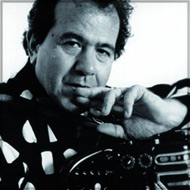
 |
Duration: 4'00", 3.2 Mb. (128kB/s, 44100 Hz) |
- Galliano, Richard and the orchestra of Frank Purcel
- Performed during a tournee in 1975
- Duration: 4'00"
- Recording date: 1975 recording place unknown
Darío Moreno wrote about this composition in an e-mail 23 May 2008:
Domenico Gallo was a Venetian composer from the Italian late baroque and pre-galant period, very closely to the modern school of Galuppi (at Venice) and Pergolesi (at Naples) school. There is an important collection of sonatas by Gallo - for a long time attributed to Pergolesi - well-known as a decisive step on galant style consolidation.
Among the few details we know of Gallo's biography we know that there was an important family named Gallo on Naples although Domenico is born in Venice, where he worked as composer and violinist; we could immediately hear it in his virtuoso variations for the violins!
Dissonances (2nds) of the violins on the little 'intro' previous of the appearance of the main theme on ostinato and the walking quarters movement of the bass on the same intro reminds me powerfully of Pergolesi's Stabat Mater and other pieces of music of the middle XVIII century (walking quarters and 4ths progressions means lamento and we don't must forget ostinato in minor key has been always (from Monteverdi Lamento della Ninfa to Bachs Chaconne) a symbol for lamento, sadness, etc... (we have other examples of German and also Italian (French of course) music for the ostinato like lamento allusion).
It is curious Gallo chose g minor as key. Of course, there is little more dark affetto but, as a violinist, I think Gallo explored that in the key of g minor there are much more possibilities to do chords on some variations than in the usual d minor-setting. By the way, it is also obvious that Gallo knew Vivaldi's Follia, similarities on sonata 12 by Vivaldi and these follia are sometimes almost textual copies (variation 4).
Finally, the variation for the viola (close to the end) is amazing! I think they are not, a part of Geminiani concerto grosso, a variation for the viola solo!
We see in Gallo's Follia the confrontation between traditional forms regular treatment of the basso continuo, deep dialog between voices and Gallo's attending to ostinato; and Napolitain incipient ideas as the Stabat Mater like 'introduction' or some striking stravagant variations much more close to the Spanish Fandangos-like flavor of Scarlatti, Soler and Boccherini than to Vivaldi Corellian Sonata.
- Musica Antiqua Köln 'Internationale Barocktage Stift Melk 2005, 2006 and 2007'
- Title: La Follia
- Released 2008 by ORF compact disc
- Duration: 9'03"
- Recording date: 2005 during a live performance of the Internationale Barocktage in Melk, Austria
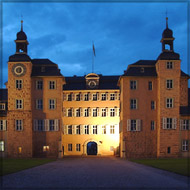
- Le Musiche Nove conducted by Claudio Osele

Duration: 0'53", 843 kB. (128kB/s, 44100 Hz)
Le Musiche Nove conducted by Claudio Osele during the Schwetzinger Festspiele May 15, 2008
© SWR, 2008- Title: 'La Follia' for two violins, cello and basso continuo in g-minor
- Broadcasted by SWR (German radio) as part of the Schwetzinger Festspiele May 15, 2008
- Duration: 8'38"
- Recording date: May 15, 2008 in the Rokokotheater, Schwetzingen, Germany
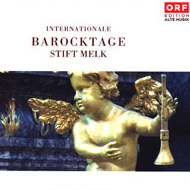
Published in 'Pièces de Luth composées sur differens modes par Jacques de Gallot avec les Folies d'Espagne enriches de plusieurs beaux couplet' (Ecorcheville collection (1670-1680). There is a copy at the Bibliotheque du Conservatoire National de Musique, Paris France.
In these variations bar 1 till 5 are identical to bar 9 till 13. The interesting part however, is that all variations have a total of 17 instead of the usual 16 bars, so the second half of the scheme includes nine measures.
 |
Duration: 5'38", 13 kB. |
| Opening of Gallot's Folies d'Espagne for lute | by Hudson Vol I, p. 91 |
|---|---|
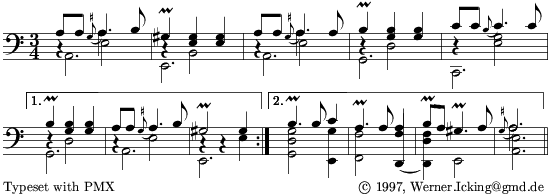 |
|
- Bailes, Anthony (lute) 'Une Douceur violente'
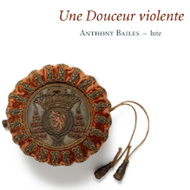
- Title: Pièces en la mineur: Folies d'Espagne
- Released 2011 by Ramée compact disc RAM 1104
- Duration: 5'03"
- Recording date: June 2010 in St. Apollinaire Church, Bolland, Belgium
- Liddel, Catherine (lute) 'La belle voileé, 17th century french
lute music by Jacques Gallot and others'
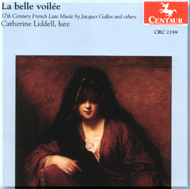
- Title: Folies d'Espagne from 'Pieces de Luth Composeé sur differens modes par Jacques de Gallot'
- Released 1997 by Centaur Records as compact disc CRC 2359
- Duration: 6'10"
- Recording date: May 1996 in Bigelow Chapel, Mt Auburn Cemetery, Cambridge, Massachusetts, USA
- Lindberg, Jakob (renaissance lute) ' Lutemusic from Scotland and France'
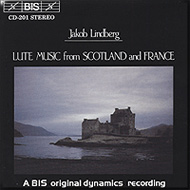
- Title: 'Folies d'Espagne' as part of 'Pièces in A minor'
- Released December 1983 by BIS as compact disc CD 201
- Duration: 6'01" (11'00" for 'Pièces in A minor')
- Recording date: unknown
- New York's Ensemble for Early Music
 Frederick Renzl wrote in the slipcase:
Frederick Renzl wrote in the slipcase:
' Le triste etat' is a sarabande as well as being constructed on a popular progrssion of harmonies having the name folia. 'L 'Altesse Royale' by by Jacques Gallot, the elder (d. 1647) is an example of 17th-century French lute music. Performed on this recording by harp and theorbo, it is based on the folia harmonic pattern and serves therefor as a complement to 'Le trite etat'.
- Title: Le triste etat / L'Altesse Royale arrangement by Frederick Renz
- Released 2001 by The Metropolitan Museum of Art, Ex Cathedra compact disc EC-9004 70070-29004-2
- Duration: 5'237"
- Recording date: May 2001 in St. James Chapel/Cathedral of St. John the Divine, New York City, USA
- Santana, Lee (lute) 'Hille Perl and Lee Santana, Marais: Les Voix Humaines'
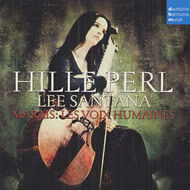 Hille Perl wrote in the slipcase about Folies d'Espagne:
Hille Perl wrote in the slipcase about Folies d'Espagne:
An innovative aspect of Gallot's Folies d'Espagne is the implementation of idioms native tot the baroque guitar - this feature undoubtedly intends to bring out the 'Spanish' in the Folies and also bring the Frenche lute 'up to date' with the 'guitar royal' made invincible by Francesco Corbetta.
- Title: Folies d'Espagne (pieces de luth, 1670)
- Released September 2007 by Deutsche Harmonia Mundi compact disc SACDH 88697071622
- Duration: 5'17"
- Recording date: January 3-6, 2007 in Colnrade Germany .
- Lute by Ray Nurse (Vancouver 1984)
- Satoh, Toyohiko (baroque lute) 'Chaconne, Johann Sebastian Bach, Baroque
Lute Recital'
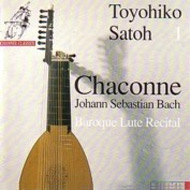 Rineke Smilde wrote in the slipcase about
this piece of Gallot:
Rineke Smilde wrote in the slipcase about
this piece of Gallot:
Final work of the 'Pièces de Luth consists of nine couplets of the famous theme of Follies d'Espagne. In Gallot's composition the register is frequently changed; the theme, the first three couplets and the superius (the high voice) is raised an octave. The variations, mostly affecting the superius, are mainly melodic (ornaments, fragments of descending scales, arpeggio's) and sometimes rhythmical (movements of quavers, introduction of syncopes and semiquavers). Gallot wrote in the vocabulary of the French musicians of his age, but especially the knowledge of Lully's music echoes in his work, as shown his grave, sometimes solemn writing constantly expressive melodic intervals (especially the diminished fourth) and his use of chromaticism. Gallot's works were still found in manuscripts of the end of the 17th and the beginning of the 18th century throughout Europe.
- Released 1990 by Channel Classics compact disc CCS 0490
- Duration: 5'21"
- Recording date: February 1990 in Bethaniënklooster, Amsterdam
- Serdoura, Miguel (baroque lute) 'Les Baricades Mistérieuses'
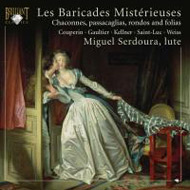
Jean-Marie Monod wrote in a translation by Anthony Hind:Les Folies d'Espagne in A minor
Duration:5'03" direct link to YouTube
© 2008 Miguel SerdouraThe folia is a dance originating in Portugal. Linking different variations to the same melody, it is related to the chaconne and the passacaglia. Having its roots in the 15th century (Cancioneira do Palacio), without doubt, it gave us the most popular chaconne theme for all Western Music: Les Folies d'Espagne
- Title: Les Folies d'Espagne in A minor
- Released December 2008 by Brilliant compact disc 93701
- Duration: 5'03"
- Recording date: December 11-13, 2007 in Osterfingen Protestant Church, Switzerland
- Smith, Hopkinson (baroque lute, 11 strings) 'Jacques de Gallot, piéces
de luth'
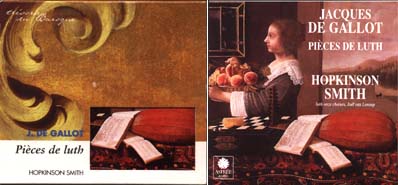 Claude Chauvel wrote for the slipcase:
Claude Chauvel wrote for the slipcase:
In 1682, Robert de Visée also refused to deal with the hackneyed subject of the 'folies d'Espagne' (in England known as 'Farinelli's Ground'): 'There are so many going the rounds, every concert resounds with them, that I could but say the same thing as others in their folies'. Yet we know how popular the theme was, even up to Rachmaninov and beyond! The famous harmonic progression to the rhythm of a sarabande inspired Gallot to write a set of ten variations which, in their bariolages reminiscent of the theorbo, the luxuriance of their ornamentation, the battery in imitation of the guitar, and their contrasting registers seem to use all the lute's resources
- Title: Folies d'Espagne
- Released January 1994 by Astree compact disc 8528
- Duration: 4'41"
- Recording date: January 1994 in Waldenburg (Switersland)
- Baroque lute built by Joël van Lennep

Joaquim wrote about his folia:
I believe that the Folia-tune originated from Portugal (my home country) in the Middle Ages. My interpretation has a theme and 7 variations. In each variation i try to emphasize a different aspect of the flute technique. For instance variation 4 is made in multiphonics and variation 6 uses harmonics.
| The opening of Folia | © Joaquim Pedro Galvão, used with permission |
|---|---|
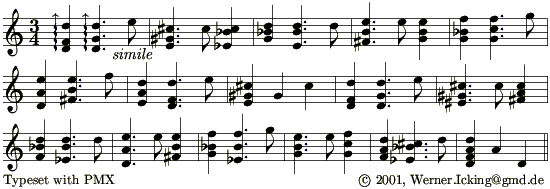 |
|
- Galvão, Joaquim Pedro
The oeuvre of Joaquim Pedro Galvão can be found at http://www.musicalia.co.uk/joaquim.html- Not yet published
- Score 2 p., 23 cm x 28 cm

- Garcia, Anthony 'Malili dreaming'
- Title: La Folia
- Released 2007 by Manjaro Music compact disc ordernr.
- Duration: 10'18"
- Recording date: unknown
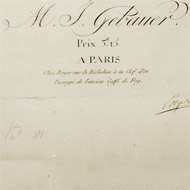
- No published music of Air des Folies d'Espagne for violin found.
- Published in Pazdírek, Franz, The Universal Handbook of Musical Literature,VIII, Wien, 1904-1910, p. 129
- Thanks to François-Emmanuel de Wasseige for detecting this item in literature
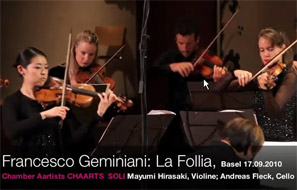
The Concerto grosso in D minor is the twelfth in a set of such works which Geminiani published in 1726 as arrangements of Corelli's Opus 5 sonatas for violin and basso continuo. Theme and 23 variations.
A live performance
by Chamber Orchestra Chaarts |
- Abbado, Michelangelo (violin) and Caruana, Riccardo (cello)
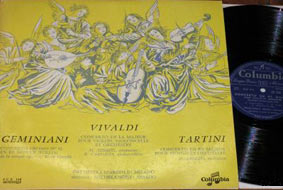
- Title: Concerti grosso La Follia
- Released by Columbia lp FCX 368
- Duration: unknown
- Recording date: unknown
- Academy of Ancient music, Manze, Andrew conductor 'Concerti Grossi (after
Corelli opus 5)'
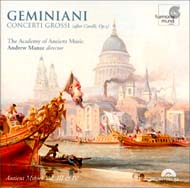
- Title: Concerti grossi (12) after Opus 5 of Arcangelo Corelli: no 12 in D minor
- Released by Harmonia Mundi (Fra) 2000 compact disc 907261
- Academy of Ancient music, Manze, Andrew conductor 'The Grand Tour'
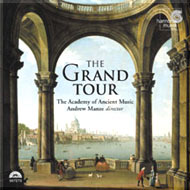
- Title: Concerto Grosso No. 12, in D minor, 'Follia'
- Released September 2002 by Harmonia Mundi compact disc HMU 907273
- Duration: 11'22"
- Accademia Bizantina conducted by Ottavio Dantone
- Title: 'Follia' as part of the program 'Arien für Senesino' during the Dresdner Musikfestspiele 2008
- Broadcasted by radio MDR Figaro (Germany) May 25, 2008
- Duration: 11'45"
- Recording date: May 12, 2008 in Schauspielhaus Dresden, Germany
- Akademie für Alte Musik Berlin
- Title: Concerto grosso No.12 in D minor 'La follia'
- Broadcasted by NDR (German radio) April 3 2008, courtesy of South West German Radio, Stuttgart
- Duration: 12'03"
- Recording date: performance live May 9, 2003 during Schwetzingen Festival, Schwetzingen, Germany
- Bobesco, Lola (violin and conductor) 'Albinoni adagio, Rossini, Geminiani,
Pachelbel, Ysaye'
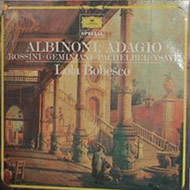
- Title: 'La Follia'. Concerto Grosso for 2 violins, viola, cello and strings No.12
- Released by Deutsche Grammophon lp 2544 044 (Made in Holland)
- Duration: 11'02"
- Recording date: 1972
- Bobesco, Lola (violin and conductor) 'Ensemble d'Archets Eugene Ysaye plays
Rossini, Albinoni, Ysaye, Geminiani, Pachelbel'
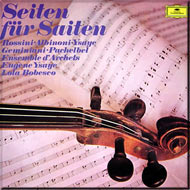
- Title: 'La Follia' concerto grosso für zwei Violinen, Viola, Violoncello, Streicher und Basso continuo Nr. 12 d-moll
- Released by Deutsche Grammophon lp DG Stereo 2538 162
- Duration: 11'02"
- Recording date: 1972
- Bobesco, Lola (violin and conductor) and her String Ensemble 'Music of Venice'
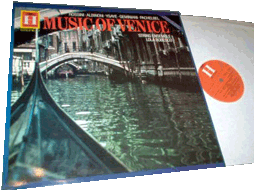
- Title: 'La Follia'
- Released by Heliodor LP 2548 219 (made in England) original release by Deutsche Grammophon
- Duration: 11'02"
- Recording date: 1972
- Budapest Strings conducted by Bela Banfalvy
- Released by Hungaroton HCD 12995
- Recording date: 1989
- Chamber Orchestra Chaarts (Maurice Steger: recorder, Mayumi Hirasaki 1st violin, Daria Zappa: 2nd violin, Andreas Fleck: violoncello, Naoki Kitaya: harpsichord)
- Title: 'La Follia'
- Broadcasted by the chamberorchestra at YouTube October 22, 2010
- Duration: 12'07"
- Recording date: September 17, 2010 in the Martinskirche in Basel, Switscherland
- See for more information about the ensemble http://www.chaarts.ch
- Combattimento Consort Amsterdam conducted by Jan Willem de Vriend
This was a concert called "Les surprises de l'amour" broadcasted by the radio afterwards. Next to Geminiani, Graupner (Concerto for oboe, chalumeau, viola d'amore, strings and bc in B flat), J.S. Bach (BWV 1055), Telemann (TWV 53, E1) and Rameau (Les Surprises de l'Amour, ballet: suite for orchestra) were part of the program and broadcasting.- Title: 'La Follia'
- Concert broadcasted by the Dutch Radio IV in a later series
- Duration: 9'50"
- Recording date: October 7, 2004 in De Concertzaal, Tilburg, The Netherlands
- Published in the newsgroup alt.binaries.sounds.mp3 August 2005 by Sagittarius
- Concerto Copenhagen directed by Kenneth Weiss
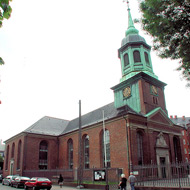
Concerto Copenhagen plays GeminianiNov. 27 November 2011 in Copenhagen, Denmark
Duration: 11'30" direct link to YouTube
© 2011 by Concerto Copenhagen- Title: 'La Follia"
- Concert broadcasted by AVRO radio 4 "Nachtconcert" (The Netherlands), 31 October 2013
- Duration: 11'30"
- Recording date: November 27, 2011 during a live concert in Garnisons Kirke, Copenhagen, Denmark
as part of the program 'Concerti, Napoli' .
- Concerto Copenhagen directed by Lars-Ulrik Mortensen
- Title: 'La Follia. concerto grosso no 12 en re mineur'
- Concert broadcasted by Radio France, 30 October 2007
- Duration: 12'22"
- Recording date: September, 22 2007 in l'Abbatiale d'Ambronay (Festival d'Ambronay)
- Concerto Köln

Concerto Köln plays Geminiani May 10, 2013 in the cathedral of Mechelen, Belgium
Duration: 11'58" direct link to YouTube
© 2013 by Concerto Köln- Title: 'La Follia. concerto grosso no 12'
- Concert broadcasted by Klara (Belgium), 1st of July 2013
- Duration: 11'58"
- Recording date: May 10, 2013 in Sint-Rombouts cathedral in Mechelen, Belgium
- English Concert/Pinnock, Trevor conductor 'A grand concert of musick,
English Baroque Concerti'
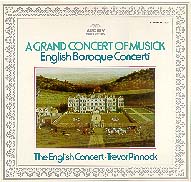 Nicholas Anderson wrote about La Follia
for the cover:
Nicholas Anderson wrote about La Follia
for the cover:
The Concerto grosso in D minor is the twelfth in a set of such works which Geminiani published in 1726 as arrangements of Corelli's Opus 5 sonatas for violin and basso continuo. One of Geminiani's chief contributions to the concerto grosso form was the inclusion of an independent viola part in the continuo group, thus making it a four-part rather than the customary three-part texture. This feature alone gives Geminiani's concerti grossi an individuality both of artistic and historical importance; but they are also important as examples of this composer's taste for and ability at arranging an original idea into something more elaborate and sometimes more complex than its model. [...]
Geminiani's arrangement of Corelli's Variations in D minor, "La Follia" (Op. 5, No. 12), retains his master's thematical material and harmonic structure whilst extending the imaginative character of the music both by means of richer textures and by employment of newly developed string technique. It has been said that the immense popularity of the 'variation' form in the seventeenth century reflected the limited understanding of tonality and modulation at that time. Necertheless, in the present instance, we have a fine example of the flexibility of the form and the way in which it lent itself to the development of diverse instrumental idioms. Apart from this, Geminiani and other pupils of Corelli such as Veracini, Locatelli, and Somis (the teacher of Leclair), inherited from their teacher a clarity of form and an expressive technique which had a long lasting and far reaching effect on the chamber music of many European countries. The arrival of Italian and German violinists in England, moreover, was largely responsible for bringing to the attention of English musicians the true potential of the violin- Title: Concerto grosso in D minor (arrangement of Corelli's La Follia Variations, Op. 5, 12)
- Released 1979 by Archiv LP 2533 423
- Recording date: February 26 - March 2, 1979
- English Concert/Pinnock, Trevor conductor 'radio broadcasting AVRO-radio'
- Title: Concerto grosso in D minor (arrangement of Corelli's La Follia Variations, Op. 5, 12)
- Recorded by the AVRO (dutch radio) and broadcasted February 8, 2002 in a program entitled 'Ochtendconcert'
- Duration: unknown
- Recording date: January 28, 2002 in Muziekcentrum Vredenburg, Utrecht The Netherlands
- Ensemble 415, Banchini, Chiara conductor 'Geminiani, 12 concenrti grossi'
Chiara Banchini wrote for the slipcase:
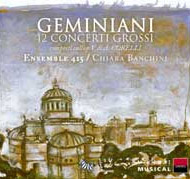
[...] I made a point of working on the so-called sonate da camera tht make up the second part of op. V. Their apparent simplicity does not prevent ech movement from being a perfect little tableau: several styles of composition, a variety of dances (sarabande, gigue courante, gavotte) alternating with contrapuntal movements, never a moment too long, a subtle texture in which the bass takes on a concertante role and abandons its continuo function. The da camera half of opus V concludes with that incredible Follia which has come down over centuries, a brave piece intended to show off the technical prowess of every virtuoso. And here I was discovering it anew, amazed to find I was being asked to perform a 'folly' restored to its initial simplicity and purity. Here, Corelli goes right to the heart of things: not a note too many, not a note too few.
And Dottore Enrico wrote for the slipcase:In selecting Corelli's op. V Geminiani must have taken account, not only of its being one of the most important works to emerge from the Roman school, but also of the fact that the final sonata in the set - the Follia - was one of the best-known compositions of the early eighteenth century, and in itself a guarantee of success. A success that - if Hawkins (John Hawkins, the music historian who is quoted in the slipcase for finishing work of Corelli by Geminiani) is to be believed - initially proved elusive, but which has finally been confirmed in the past few decades, thanks to the recent rediscovery of the works of Corelli's pupil and transcriber Geminiani
- Title: Concerto No. 12 in D minor "Follia"
- Released 2004 by ZigZag Harmonia Mundi compact disc ZZ 040301
- Duration: 11'33"
- Recording date: February 2-7, 2003 Bon Secours church, Paris, France
- Ensemble 415, Banchini, Chiara conductor 'Bononcini and Geminiani'
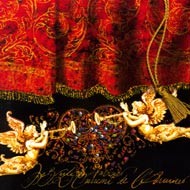
- Title: Concerto Grosso No. 12 "La Follia" in d minor
- Chiara Banchini, violin solo
- A gift recording from Société Générale Group, not for sale
- Released 2003 by ZigZag Territoires compact disc without order number
- Duration: 11'32"
- Recording date: February 2-7, 2003 Bon Secours church, Paris, France
- Ensemble d'archets Eugene Ysaye/Bobesco, Lola conductor 'Seiten fur
Saiten'
- Title: La Follia
- Released 1972 by Deutsche Grammophon LP 2538 162
- Duration: 11'03"

- Europa Galante/Biondi, Fabio conductor. 'Geminiani Concerti grossi,
Op. 3 La Follia'
Enrico Careri wrote for the slipcase:La Follia, both in its original version for violin and continuo (published in Rome in 1700) and in Geminiani's concerto version, is now among the most frequently performed of all instrumental works of the early eighteenth century. It consists of an adagio melody of the greatest simplicity and twenty-three extraordinary variations that provided a point of reference for violinists and composers alike throughout the eighteenth century and beyond.
- Title: La Follia, trascrizione per concerto della sonata op. 5 n. 12 di Arcangelo Corelli
- Released 1997 by Opus 111 compact disc OPS30-172
- Duration: 12'44"
- Recording date: September 1996 in Oratorio di Santa Croce, Mondovì, Italy
- Europa Galante/Biondi, Fabio conductor
Europa Galante plays Geminiani March 31, 2013 in Krakow, Poland
Duration: 11'28" direct link to YouTube
© 2013 by Europa Galante- Title: La Follia, trascrizione per concerto della sonata
op. 5 n. 12 di Arcangelo Corelli
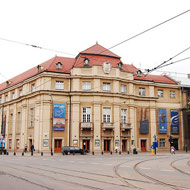
- Broadcasted by ORF1 (Austria) May 8, 2014 in the program Konzert am Vormittag (presentation Bernhard Trebuch),
- Duration: 11'28"
- Recording date: March 31, 2013 during the Festival Misteria Passchalia in the Karol Szymanowski Philharmonie in Krakow, Polan
- Title: La Follia, trascrizione per concerto della sonata
op. 5 n. 12 di Arcangelo Corelli
- Europa Galante/Biondi, Fabio conductor
- Title: La Follia, trascrizione per concerto della sonata op. 5 n. 12 di Arcangelo Corelli
- Recorded and broadcasted live BBC 3 Radio.
- Duration: 12'09"
- Recording- and broadcastings date: July 5, 1999 in St. Johns Square, London as part of the Early Music Lufthansa Festival
- Europa Galante/Biondi, Fabio conductor
- Title: Concerto Grosso für Streicher und Basso continuo Nr. 12 d-moll 'la follia'
- Recorded 23 May 2006 at the Schwetzinger Festspiele, Schwetzingen, Baden, Germany for Radio and television by SWR2, Germany.
- Duration: 11'32"
- Broadcasted by BBC 3 Radio in the program 'Sunday Gala' July 30, 2006
- Broadcasted by Arte Television November 5, 2006
- Europa Galante/Biondi, Fabio conductor
- Title: Concerto La Follia
- Recorded during the concert 'Francia, Italia, Inghilterra - legami e scambi (France, Italy, England - connections and influences) 2 March 2007 at Vredenburg, Utrecht, The Netherlands.
- Duration: 11'16"
- Broadcasted live by TROS Radio, The Netherlands in the program 'Avondconcert' 2 March 2007
- European Union Baroque Orchestra/Banchini, Chiara conductor
In the programme was written:
This extraordinary youth orchestra performs with period instruments and for this concert has tripled its usual size, boasting 60 players. They are directed from the violin by Chiara Banchini, one of baroque music's most admired interpreters.
Here they perform a programme of music by contemporaries Corelli, Muffat, Geminiani and Handel who met in Rome in the late 1600s and early 1700s. Muffat's music is immediate and powerful, Corelli's coolly elegant, while Geminiani's La Follia, a reworking of Corelli's set of virtuoso variations, highlights his talent as one of the greatest violinists of his time.- Title: Concerto grosso No 5 in d minor (after Corelli's Opus 5) 'Folia'
- Recorded during the Edinburgh International Festival 2009, August 25 in Usher Hall , Edinburgh, Scotland.
- Duration: 10'34"
- Broadcasted live by BBC Radio 3’s 'Performance on 3' programme at 7:00pm, 16 September 2009 (thanks to Sagittarius for posting at Usenet)
- European Union Baroque Orchestra/Mortensen, Lars Ulrich conductor and harpsichordist
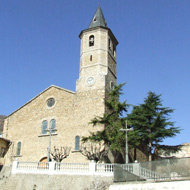
A live performance by the European Union Baroque Orchestra
Duration: 11'08" direct link to YouTube
© 2013 by the European Union Baroque Orchestra- Title: Concerto grosso Nr. 12 d-Moll, "La Follia" after Arcangelo Corelli
- Recorded during the "Festival de Música Antiga dels Pirineus" 27 July 2013 in Església Parroquial de Sant Feliu in Sort, Catalunya LLeida in Spain
- Duration: 11'08"
- Broadcasted live by ORF1 (Austria) "Konzert am Vormittag", broadcasted 3 October 2013
- Freiburger Barockorchester conductor Gottfried von der Goltz '
Telemann, Platti, Vivaldi & Geminiani: Concerti all'arrabbiata'
Katharina Eickhoff wrote for the slipcase:
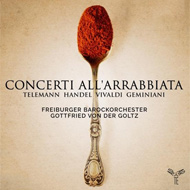
The history of the "Follia" is ancient - the "rowdy amusement" as this phenomenon was referred to in Germany with a pinch of annoyance, probably spread as early as the Middle Ages. It was originally a dance with a particular theme and rhythm originating from Spain or Portugal already used for secret gatherings by 13th century dance addicts.
Playing and dancing the follia in public was soon strictly forbidden by decree, generating of course a secretive aura which only increased its erotic charge. The character of these "follia" dances, with their constant repetition of a rhythmic motif. relies on the same hypnotic principle that animates dancers at Berlin's "Berghain" nightclub and brings them into altered states of consciousness.
Mind you, at that time, the "follia" meetings seem to have been pretty hot events, even without crystal meth thrown in the mix: you arrived masked but after increasingly wilder improvisations all masks and inhibitions were dropped. Naturally, religious authorities of all confessions became a bit "irritated under the cassock" as a result. In 16th century Seville, a commission was created with the aim of uprooting this evil but nothing came of it because the commission's chairman himself was caught dancing. The Inquisition lovingly took care of him with a few thumb-screwing sessions, after which he begged to be executed and finally redeemed from his terrible follia-addiction. What remains after all these clandestine activities is a single and surprisingly harmless theme. A simple dotted melodic line which has inspired the most beautiful flourishes from all possible composers. Clearly, the 18th century Franceseo Geminiani, with his Concerto Grosso in D minor on "La Follia", was a member of this sect. Like most interesting composers, Geminiani -no doubt called "11 Furibondo" for a good reason was obsessed with rhythm. This preference must have shaped his violin playing, learned
from Arcangelo Corelli in Rome and praised throughout Europe.
Corelli's Concerto Grosso on the follia is also the basis for Geminiani's concerto but Geminiani spices it up much more than his teacher, adding not one but two solo violins as well as a solo cel lo for good measure! For Geminiani, ru les were predictability boring and meant to be disregarded. His treatment of the ~follia', beyond the una ltered basic motif, is a bag full of surprises ...- Title: Concerto Grosso in D Minor for 2 Violins, Cello, Strings and Continuo, "La Follia" arr. after Arcangelo Corelli's Sonata No 12, op. 5: Adagio, Allegro, Adagio, Vivace, Allegro, Andante, Allegro, Adagio, Allegro, Adagio, Allegro
- Released 2021 by Aparté AP262
- Duration: 11'23"
- Recorded 26-28 October 2020 in Ensemblehaus Freiburg, Freiburg (Germany)
- Harmonie Universelle/Florian Deuter conductor and violinist (Florian Deuter: solo violin and conductor, Mónica Waisman: solo violin II, Joseph Tan, Martyna Pastuszka, Frauke Pöhl, Gudrum Höbold, Lucia Giraudo, Annegret Hoffmann: violin, Aino Hildebrandt, Stefan Schmidt: viola, Johannes Berger: cello, Christopher Scotney: bass, Michael Dücker: theorbo, Francesco Corti: harpsichord

A live performance by Harmonie Universelle
Duration: 11'20" direct link to YouTube
© 2013 by Harmonie Universelle- Title: Concerto grosso Nr. 12 d-Moll, "La Follia" after Arcangelo Corelli
- Recorded in Vredenburg Leische Rijn as part of the program Corellimania 15 November 2013 in Vredenburg Leidsche Rijn, Utrecht, The Netherlands
- Duration: 11'20"
- Broadcasted live 15 November 2013 by AVRO radio 4 as part of the program "De Vrijdag van Vredenburg" (The Netherlands)
- Holland Baroque Society (violin: Lidewij van der Voort, Judith Steenbrink,
David Wish, George Crawford, Maite Larburu, Aira Maria Lehtipuu, Zefira Valova, Stefano Rossi;
viola: Esther van der Eijk, Jan Willem Vis; cello: Tomasz Pokrzywinski, Diana Vinagre; violone: James Munro;
harpsichord: Tineke Steenbrink, theorbo: Daniele Caminiti) conducted by Azzolini, Sergio
- Title: Concerto grosso No 5 in d minor (after Corelli's Opus 5) 'Folia'
- Recorded during a live concert Sep 3, 2009 in the Geertekerk, Utrecht, The Netherlands during Festival Early Music Utrecht 2009
- featuring Sergio Azzolini bassoon
- Broadcasted by AVRO radio Netherlands September 9, 2009
- Duration: 10'33"
- Recording date: Sep 3, 2009 in the Geertekerk, Utrecht, The Netherlands during Festival Early Music Utrecht 2009
- Il Giardino Armonico/ Antonini, Giovanni conductor
- Title: Concerto Grosso pour cordes et basse continue op.5 no 12 en ré mineur "La Follia"
- Recorded during a live concert January 2, 2009
- Broadcasted by Radio France program 'Le concert de l'après-midi par Alain Pâris' January 27, 2009
- Duration: 11'23"
- Recording date::January 12, 2009 in Théâtre des Champs-Elysées in Paris, France
- I Musici 'Concerti e Follie al tempo di G. B. Pergolesi'
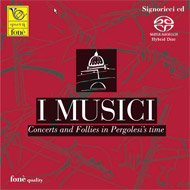
- Title: Concerto grosso n. 12 “La follia” per archi e cembalo
- Released 2009 by Audiophile Productions compact disc (super audio cd)
- Duration: 11'22"
- Recording date: August 12-14, 2009, Caprarola (VT) Casa di Spiritualità S.Teresa - Padri Carmelitani Scalzi, Italy
- I Musici (Roberto Michelucci, violin I Walter Gallozzi, violin II Aldo
Bennici, viola Mario Centurione, cello Maria Teresa Garatti, harpsichord)
'12 Concerti grossi after Corelli's Sonatas for Violin and Continuo, Op.5
(rev. Franz Giegling)'
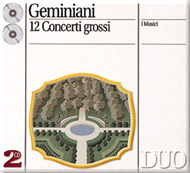 Nicholas Anderson wrote for
the slipcase:
Nicholas Anderson wrote for
the slipcase:
Geminiani's arrangements of his teacher's violin sonatas are both sensitive and technically skilled. Throughout the set he retains Corelli's thematic material and basic harmonic structure while extending the imaginative character of the music by means of richer textures and the employment of newly developed string techniques. Here, as in all his subsequent concertos, we find a "concertino" group of quartet as opposed to trio texture, while the ripieno consists of violins in two parts, cello and bass. Corelli's formal clarity, however, and his simply expressive idiom are carefully preserved.
In the 'Gramophone' review was stated:What, in fact, is far more original, is Geminiani's inclusion of an independent viola part in the concertino group, as opposed to the customary three-part texture of two violins and a cello. These were not Geminiani's only compositions based on those of other composers and, whilst it does, perhaps, seem curious that he spent so much energy in adaptations of this kind, we can admire him both for knowing his market and for the valuable impact he made on eighteenth-century English musical life.
The Op. 5 Concertos retain Corelli's thematic material and harmonic structure whilst extending the character of the music by means of richer textures and newly developed string technique. The great respect and understanding which Geminiani shows towards the basic material of his former teacher is, in a sense, a touching act of homage, for we are never allowed to forget that this is Corelli speaking through his pupil rather than the pupil improving upon his master.- Re-released by Philips 1993 compact disc 438 766-2 (2 CDs)[ADD]
- Duration: 13'45"
- Recording date: September 1969 in Switzerland
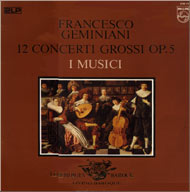
- I Musici '12 Concerti Grossi after Corelli's sonatas for violin and
continuo op. 5'
- Title: Concerto Nr. 12 d-moll 'La Follia'
- Released 1970 by Philips lp-set (2x) 6768 179
- Duration: 13'52"
- Recording date: not indicated
- I Solisti Italiani 'Bonporti, Galuppi, Geminiani, Pachelbel'
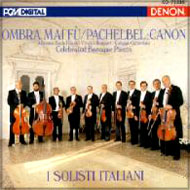
- Title: Concerti Grossi (12) after Op 5 of Arcangelo Corelli No 12 in D minor 'La Follia'
- Released 1989 by Denon compact disc 73335
- Duration: unknown
- Recording date: unknown
- Indiana University Baroque Orchestra
- Recorded by Indiana University, School of Music in Bloomington
- Sound tape reel, 1984-1985 no. 635
- Duration: 10'56"
- Recording date: March 3, 1985
- Manze, Andrew 'Andrew Manze, portrait'
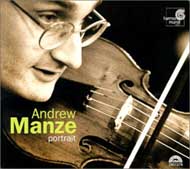
- Title: Concerti grossi (12) after Opus 5 of Arcangelo Corelli: no 12 in D minor
- released by Harmonia Mundi (Fra) 2000 compact disc 2907278
- Mercury Baroque
- Broadcasted by Houston Public Radio program 'Front Row'
- Duration: 06'00"
- Recording date: August 31, 2007, Houston, USA
- Moscou Chamber Academy, Tatjana Grindenko (violin)
- Released by Ondine compact disc ODE 7352
- Recording date: May 1989
- Les Muffatti, Peter Van Heyghen conductor
- Title: Concerto grosso en ré mineur d'après l'opus VI no12 de Corelli
- Broadcasted by RTBF (Belgium radio) February 23, 2009
- Duration: 11'30"
- Recording date: July 19. 2008 at the Festival de Wallonie 2008 in Eglise Saint-Remacle of Saint-Hubert, Belgium
- Orchestre Philharmonie de Chambre de Toulouse conductend and violon Gilles Colliard 'La Follia, Italie Baroque'
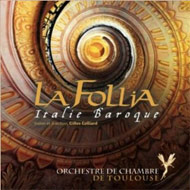
- Title: Concerto Grosso La Follia, thème et variations
- Released 2010 by compact disc
- Duration: 10'02"
- Can be ordered by oct@orchestredechambredetoulouse.fr
- Recording date: unknown
- Orchestra of the Age of Enlightenment 'Italian Baroque concertos'
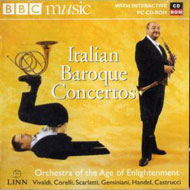 From the slipcase:
From the slipcase:
Geminiani's orchestration of his teacher Corelli's famous Violin Sonata 'La Follia' deserves to be more widely known. The arrangement is both sensitive and technically accomplished. Corelli's thematic material and basic harmonic structure remain in place, but Geminiani extends the imaginative character of the music by means of richer textures and a more advanced string technique. The concerto falls into a single movement, consisting of the 'Follia' theme, introduced at the outset, followed by 25 variations on it. Geminiani assures essential textural contrasts by juxtaposing his smaller concertino group with that of the full band. In this warm tribute to his master, Geminiani offers us a piece full of brilliant gestures and string virtuosity, yet retaining the essence of a work which Corelli himself is said to have regarded highly.
- Title: Concerto grosso No. 12 in D minor, La Follia
- Released 2001 by BBC Music Magazine in corporation with Linn Records compact disc Music Media Center CD 7961
- Duration: 11'10"
- Recording date: 2001
- Orquesta Nacional de España/antonini, Giovanni Antonini conductor
Concertino: Joan Espina & Laura Salcedo, violins - Lorena Otero, viola - Miguel Jiménez, cello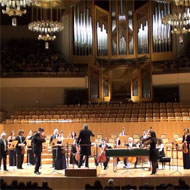
Orquesta Nacional de España plays all variations by Francesco Geminiani
Duration: 12'02" direct link to YouTube
© 2012 by Orquesta Nacional de España- Title: Concerto Grosso op 5 nº 12 in d, "La Follia"
- Released 2013 by Orquesta Nacional de España on YouTube from a live performance
- Duration: 12'02"
- Recording date: December 2nd, 2012 in Auditorio Nacional de Música, Madrid, Spain
- La Petite Bande/Kuijken, Sigiswald conductor 'Geminiani: Concerti grossi'
- Concerto grosso No. 6 D minor according to Variations on La Follia op. 5 No. 12 from A. Corelli
- Released 1987 by Editio Classica Deutsche Harmonia Mundi compact disc GD77010
- The Purcell Quartet (Purcell Band) 'La Folia and other concertos and
sonatas'
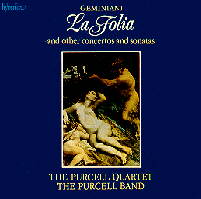
The Purcell Quartet plays all variations by Francesco Geminiani
Duration: 10'52" direct link to YouTube
© 1987 by The Purcell Quartet- Released 1988 by Hyperion compact disc CDA66264
- Duration: 10'52"
- Recording date: June 4/5 & 12, 1987
- The Purcell Quartet (Purcell Band) 'La Folia, variations on a
theme'
This cd assembles 'La Folia'-inspired works by six composers, starting with the original Corelli Sonata and ending with Geminiani's orchestral arrangement of it. The C.P.E. Bach and A. Scarlatti works are for solo keyboard. The six pieces are all taken from a series of earlier Hyperion cd's individually devoted to the respective composers. Duration of the six folias (incl. Marais, Vivaldi) 68'22"- Released 1998 by Hyperion compact disc CDA66264
- Duration: 10'52"
- Recording date June 4/5 & 12, 1987
- The Rare Fruit Council
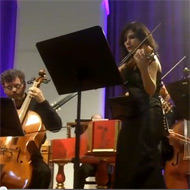
The Rare Fruit Council recorded live in Utrecht
Duration: 4'29" direct link to YouTube
© 2011 by The Rare Fruit Council- Title: Concerto Grosso op 5 nº 12 in d, "La Follia"
- Released 2011 by Radio4 (the Netherlands) for YouTube. Only the first part is published.
- Duration: 4'29"
- Recording date: September 4, 2011 in The Geertekerk, Utrecht as part of the Festival of Early Music
- Scottish Ensemble conducted by Jonathan Morton
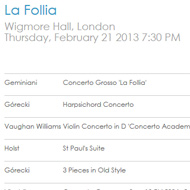
In the program was written:'La Follia' – musical madness. Sometimes you just can't fight it when music gets in your head and just goes round and round – this can be uplifting, maddening, or both! Should you succumb to 'La Follia' at this concert, you'll be guaranteed plenty of musical 'ear-worms', not least in Holst's St. Paul Suite and Britten's Simple Symphony, making sure that the Ensemble experience stays with your long after the concert.
- Title: Concerto grosso in D, "La Follia"
- Broadcasted by ORF (Austra) radio May 29, 2013 in the program Konzert am Vormittag
- Duration: 11'42"
- Recording date: February 21 in The Wigmore Hall, London, England during a live concert with the program La Follia
- Societa Corelli '17th and 18th Century Italian music'
- Title: La Follia, tempo con 23 Variazione transcribed by Geminiani
- Released 1955 by RCA Victor (Camden, N.J.) LP LM1880
- Recording date: unknown in Italy
- Program notes by James Lyons on slipcase
- Maurice Steger, recorder with The English Concert / Laurence Cummings: Mr. Corelli in London
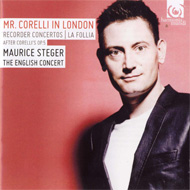
From the slipcase:The theme from La Follia, the twelfth of Corelli's sonatas, with its twenty-five variations, became the most popular and famous of the set. In our recording, the English Concert performs the concerto grosso in the original version by Geminiani with interpolations for solo strings.
- Title: Concerto grosso after Corelli's 'La Follia' in d minor / ré mineur / d-moll | theme & 25 Variations upon the sarabanda
- Released 2010 by harmonia mundi HMU 907523
- Duration: 11'14"
- Recording date: July, 2009 at All Hallows' Church, Gospel Oak, London, England
- Tafelmusik Baroque Orchestra/Lamon, Jeanne 'Italian Concerti Grossi'
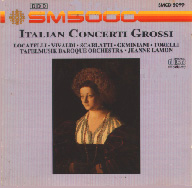 Jeanne Lamon: violin I, Stephen Marvin: violin II, Christina Mahler: violoncelle,
Paul O'Dette: lute, Charlotte Nediger: harpsichord.
Jeanne Lamon: violin I, Stephen Marvin: violin II, Christina Mahler: violoncelle,
Paul O'Dette: lute, Charlotte Nediger: harpsichord.
- Released 1991 by Canadian Broadcasting Corporation/Societe Radio-Canada SMCD 5099
- Duration: 9'13" all variations indexed
- Recorded in St. Mary Magdalene Church, Toronto.
- Taylor-Corbett, Lynne (choreography) 'Chiaroscuro'
- Premiere: may 21, 1994 as part of the Diamond Project
- Danced by New York City Ballet
- New York State Theater
- Toulouse Chamber Orchestra/ Armand, George conductor/violin and Brosse,
Jean Patrice (harpsichord)
- Title: Sonata No 12 in D minor 'La Folia'
- Released by EMI 1C 065-16201 Q
- Les Violons du Roy conducted by Bernard Labadie 'Bonbons'
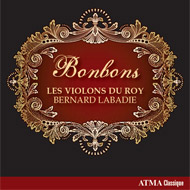 In the slipcase Irène Brisson (translated by Sean McCutcheon) wrote:
In the slipcase Irène Brisson (translated by Sean McCutcheon) wrote:
Arcangelo Corelli (1653-1713), an unsurpassed violin master, composed 12 concerti for strings, including the famous Christmas Concerto; 48 trio sonatas (opus 1 to 4); and 12 sonatas for violin and basso continuo (opus 5), published in 1700. The latter collection ends with a sonata in a single movement based on a ground-bass motif known as the folia (follia, or folie(s) d’Espagne). Variations on this ground-bass were written throughout the 17th and 18th centuries, and, later, not only by Franz Liszt (Rhapsodie espagnole) but also by Sergei Rachmaninoff (Variations on a theme by Corelli). The harmonic progression of the folia inspired Corelli to write some of the most brilliant violin music of his time. The sonata that ends his opus 5 is in a single movement, and comprises the theme followed by 23 variations in various tempi. Francesco Geminiani (1687-1762), one of the master’s students, transcribed this folia for string orchestra and, in 1726 and in 1729, refashioned all of Corelli’s opus 5 as concerti grossiArcangelo Corelli (1653-1713), an unsurpassed violin master, composed 12 concerti for strings, including the famous Christmas Concerto; 48 trio sonatas (opus 1 to 4); and 12 sonatas for violin and basso continuo (opus 5), published in 1700. The latter collection ends with a sonata in a single movement based on a ground-bass motif known as the folia (follia, or folie(s) d’Espagne). Variations on this ground-bass were written throughout the 17th and 18th centuries, and, later, not only by Franz Liszt (Rhapsodie espagnole) but also by Sergei Rachmaninoff (Variations on a theme by Corelli). The harmonic progression of the folia inspired Corelli to write some of the most brilliant violin music of his time. The sonata that ends his opus 5 is in a single movement, and comprises the theme followed by 23 variations in various tempi. Francesco Geminiani (1687-1762), one of the master’s students, transcribed this folia for string orchestra and, in 1726 and in 1729, refashioned all of Corelli’s opus 5 as concerti grossi
- Title: Concerto grosso «La Follia » d'après | after Corelli, OP. 5 No 12
- Released 2010 by ATMA Classics compact disc ACD2 2600
- Duration: 10'48"
- Recording date: February 2010 in Salle Raoul-Jobin, Palais Montcalm, Québec, Canada.
- Venice Baroque Orchestra directed by Andrea Marcon
(harpsichord: Andrea Marcon, Violin I: Gianpiero Zanocco, Stefano Zanchetta, Matteo Marzaro, Anna Fusek, Violin II: Giorgio Baldan, David Mazzacan, Francesco Lovato, Giuseppe Cabrio, Viola: Alessandra Di Vincenzo, Meri Skejic, Cello: Francesco Galligioni, Federico Toffano, Bass: Alessandro Pivelll, Lute: Ivano Zanenghl, Traverso: Karel Valter, Alberto Crivelletto, Oboe: Andrea Mion, MIchele Favaro, Bassoon: Stefano Meloni, French horn: Alessandro Denabian, Elisa Bognetti)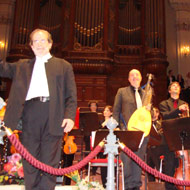
Venice Baroque Orchestra plays Geminiani October 20, 2013 in the Concertgebouw, Amsterdam, The Netherlands
Duration: 10'58" direct link to YouTube
© 2013 by Venice Baroque Orchestra- Title: Concerto grosso op.5 n.12. (La Folia)
- Concert direct broadcasted by Radio 4, The Netherlands
- Duration: 10'58"
- Recording date: October 20, 2013 in the Concertgebouw, Amsterdam, The Netherlands
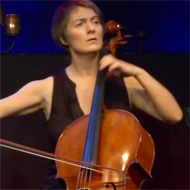
- Anisimova, Tanya (cello)
Duration: 6'08" direct link to YouTube
Direct link to YouTube
© 2012 by Tanya Anisimova- Title: La Folia
- Published 2012 at YouTube by Blue House Productions Blue House
- Duration: 6'06"
- Recording date: unknown
- Geraerdts, Jaap
- Title: La foli´a perpetua per violino solo, variaties op een thema van Michel Farinel(li) of - volgens andere bronnen - Giovanni Stefani (on a theme by Michel Farinel(li) or by Giovanni Stefani as mentioned by other sources)
- Commissioned by De Adama Zijlstra Stichting (foundation) for the Scheveningen Internationaal Vioolconcours 1996
- Published 1995 by Donemus
- Duration: approx. 7'44"
- Dedicated to Lorenzo Pappolo (alias of Jan Bom)
This composition does not follow the familiar 16 bar structure of the Folia. The first 4 bars are conform the structure, easily recognizable and repeated over and over after a somewhat hazy middlepart and ending of the variations. The premiere played by Noel Mewton-Wood (piano) and the Aldeburgh Festival Orchestra, directed by Norman del Mar was at June 16, 1951 in Aldeburgh Parish Church, England.
- Attenelle, Albert and the Orquestra simfònica de Barcelona i
nacional de Catalunya/conductor Foster, Lawrence In 1998 Malcolm MacDonald
wrote for the slipcase:
The finale, 'Folia' refers to the popular Spanish dance of that title (actually it seems of medieval Portuguese origin) and its associated tune 'Folies d'Espagne', used by Corelli in his 'La Folia' variations, by Liszt in his 'Rhapsodie Espagnole and by countless other composers besides. In portuguese 'Folia' means both a fool's dance and jollification. in Catalan it connotes madness, lunacy, in a non-literal, figurative sense. Gehrard has reffered to the lighter side of this title in the 'Follia' movement of his cantata 'l'alta naixença del rei en Jaume (Auvidis / Montaigne MO 782106). In the Concerto he evokes the darker associations in a finale of hectic, slippery moto perpetuo figuration, invaded ever and anon by severe quotations of 'La Folia' which Gerhard described as 'menacing' (and marked, in the score, 'minaccioso'). On one level these episodes are perhaps like the Brethen of the Deadly Sin in his opera 'The Duenna', exhorting us to repent, as we hurry heedless towards death. On another, they may represent the inescapability of the past. At all events, they suggest that a reckoning will eventually have to be paid for folly in Spain.
- Title: 'Concerto for piano and strings': 1 Tiento: allegro, 2 Diferencias: adagio, 3 Folia: molto mosso
- Released 1999 by Auvidis Montaigne Ltd compact disc MO 782107
- Duration: Tiento 7'28", Diferencias 11'48", Folia 5'57"
- Recording date: not indicated at all in the slipcase or container
- Donohoe, Peter and Northern Symfonia 'Ferguson, Gerhard, Rowley, Darnton: Piano Concertos'
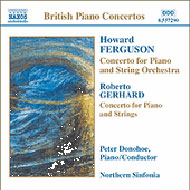 Andrew Burn wrote about this piece:
Andrew Burn wrote about this piece:
Gerhard's Piano Concerto, first performed by Noel Mewton-Wood at the 1951 Aldeburgh Festival, with the Festival Orchestra conducted by Norman Del Mar, was the first of Gerhard's works composed with serial techniques. Each movement is headed with a title that refers to Renaissance Spanish keyboard music. Tiento refers to the name used by sixteenth-century Spanish organists for toccata and the movement has a whirlwind energy in which the soloist barely pauses for breath. Diferencias is the Spanish equivalent of the English divisions or variations and Gerhard suggested that the "theme and diferencias here may be taken as seven different visions of the same face". Based on a Catalan religious song, the movement is among Gerhard's most powerful utterances, a dark lament for his country under the yoke of dictatorship into which the Dies irae is also woven. Folias was a fantasy-like form on ground bass line. It was associated with a popular seventeenthcentury melody which was widely used in keyboard and string music. Gerhard makes prominent use of the first three notes of the Folia tune in his finale which he described as having "a frenzied carnival-folly atmosphere" reminiscent of Goya's Burial of the Sardine.
- Title: 'Concerto for piano and strings': 1 Tiento: allegro, 2 Diferencias: adagio, 3 Folia: molto mosso
- Released by Naxos compact disc 8.557290
- Duration: Tiento 6'11", Diferencias 10'09", Folia 5'57"
- Recording date: unknown
- Tozer, Geoffrey and BBC Symphony Orchestra/conductor Bamert, Matthias
'Symphony No 3 'Collages', Epithalamion, Piano Concerto.
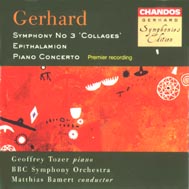 Bernard Benoliel wrote for the slipcase:
Bernard Benoliel wrote for the slipcase:
Gerhard's use of the term 'Folia' for the last movement carries an association of meanings. It refers to a chord sequence with a corresponding melodic pattern which originated in Spain in the late Middle Ages. 'Folia' in Portuguese means a 'fools dance' but in Catalan it is a euphemism for the sexual climax. Gerhard first used this term ironically in the third movement of his cantata 'L'alta naixença del rei en jaume' (1932), which also refers to the 'Goig del roser'. Rather mysteriously, in his own programme note to the concerto, he speaks of the menancing references to the 'Folia', which, as the listener will recognize, is also the first three notes of 'God save the King'. For the republican exile, writing in the Festival of Britain year, these ponderous allusions within a fleeting lightfooted moto perpetuo appear deeply subversive. Such musical satire would have been impossible in his own country, still in the grip of fascism.
- Title: 'Concerto for piano and strings': 1 Tiento: allegro, 2 Diferencias: adagio, 3 Folia: molto mosso
- Released 1997 (premier recording of piano concerto) by Chandos Records Ltd compact disc Chan 9556
- Duration: Tiento 7'19", Diferencias 11'19", Folia 6'04"
- Recording date: February 28 - March 1, 1997 in Blackheath Concert Hall
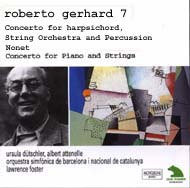
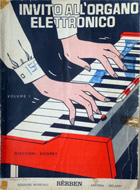 This is an relatively easy piece as part of an electronic organ method in Italian
This is an relatively easy piece as part of an electronic organ method in Italian
- Giaconni, Dogrey 'Invito all'organo elettronico, Volume 1'
- Title: La Follia, tema popolare portoghese
- Published by Edizioni Musicali Berbèn, Italy BRM 1215
- Size 21 x 29 cm, pages 57 and 58
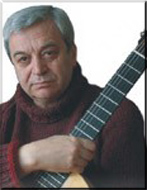
'Studi da Francisco Goya' means literally 'studies after Francisco Goya', one of the greatest Spanish painters (1746-1828) who loved the guitar. The subtitle was added to indicate that the composer was inspired by the paintings and the world of Goya for his composition.
Gilardino said about the development in variation technique of La Folia:
From the viewpoint of a composer, the variation that makes a direct use of the theme, with only some sort of ornamental treatment of either the melody or the harmony or both, is considered nowadays more a school exercise than a true creative work. The true variation is more elaborated, taking the theme as a background reference, and creating entirely new structures after it. In my "Variazioni sulla Follía", for instance, I have created completely new musical paths that have almost nothing to see with the themes, except that, from time to time, they pass through memories of the themes, and then they live them again....
 |
Duration: 1'10", 02 kB. |
| The opening of Variazioni sulla Follía | Reproduced by permission of Edizioni Musicali Bèrben |
|---|---|
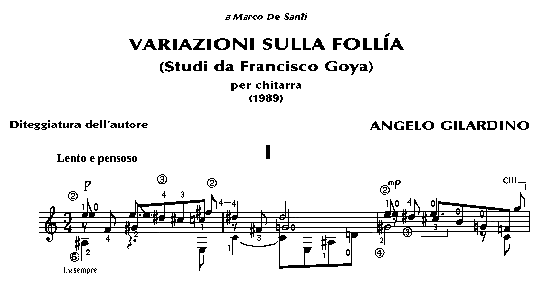 |
|
- Attademo, Luigi 'Folías; Sanz, Giuliani, Ponce, Gilardino, Sor,
Ohana'
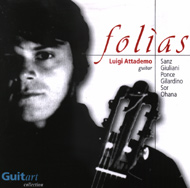 Luigi Attademo wrote for the slipcase (translation
by Maya Bodo):
Luigi Attademo wrote for the slipcase (translation
by Maya Bodo):
Angelo Gilardino's work rides Follía through hallucination. It is only through hallucination that the world can be revealed in its true sense. Without giving up the traditional way of composing with its counterpoint, its interrupted and repeated themes, and its opposite dynamics, Gilardino works out Follía again, and dives into it, as an ancient alchemist, to develop diverse and unknown sounds. This process transforms Follía into something that does not belong to the author, into something that can be, at the same time, both alienated and alienator. It is impossible to accomplish completely such a kind of alchemistic process, and this is the reason why it ends up with the quotation of Sor, another great guitarist who has chosen to render and preserve the deepness and the torture of his thoughts by means of a specific sound.
- Released 2001 by the Magazine 'Guitart' compact disc GUIT 2026
- Duration: 1 Lento e pensoso 1'13", 2 Risoluto, ma non troppo mosso 0'59", 3 Andantino scorrevole e sommesso 0'59", 4 Allegro non troppo, ma assai energico 0'53", 5 Andantino appena mosso 1'56", 6 Allegretto 0'51", 7 Andante piuttosto lento 1'22", 8 Agitato 1'00" 9 Non troppo lento, con forte scansione 2'25", 10 Rapido e lieve 1'15", 11 Mosso, legato 1'22" 12 Liberamente, come preludiando F. Sor: Les Folies d'Espagne: Thème 1'21"
- Recording date: March 25 and 29 2001 at Quality Audio, Vercelli, Italy
- Guitar by Carlo Raspagni, 1996
- See also the page Recommended Folia-recordings
- Gilardino, Angelo
- Published by Edizioni Musicali Bèrben © 1990, Ancona Italy.
- Score 23 p., 32 cm
- Duration: approx. 12'00"
- Publisher No. E.3182 B.
It was first published in Vienna by Artaria et Compag. as publication No. 2278. The original manuscript is conserved at Biblioteca Privata Terzi Bergamo, Italy
First edition in Artaria 1814 Pl. no. 2278 Vienne.
 |
Published in the public domain |
 |
9 pages in pdf-format with fingersetting of theme and
first variation, 700 kB |
 |
Duration: 4'02", 16 kB. |
| Opening of Giuliani's Variazioni sul tema della Follia di Spagna | |
|---|---|
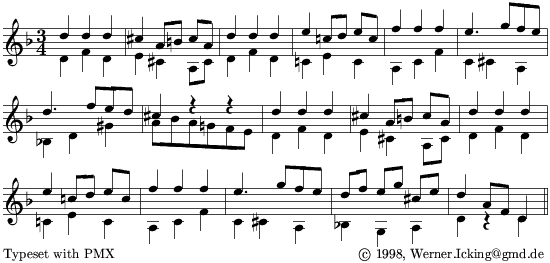 |
|
- Attademo, Luigi 'Folías; Sanz, Giuliani, Ponce, Gilardino, Sor,
Ohana'
- Released 2001 by the Magazine 'Guitart' compact disc GUIT 2026
- Duration: 1 Tema: Andantino 0'45", 2 Variazione I 0'29", 3 Variazione II 0'22" 4 Variazione III 0'57", 5 Variazione IV 0'23", 6 Variazione V: un poco più adagio, Variazione VI 2'50"
- Recording date: March 25 and 29 2001 at Quality Audio, Vercelli, Italy
- Guitar by Carlo Raspagni, 1996
- See also the page Recommended Folia-recordings
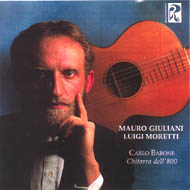
- Barone, Carlo (guitar) 'Mauro Giuliani - Luigi Moretti, Carlo Barone
chitarra dell'800'
Ivan Epicoco wrote for the slipcase:The six 'Variations sur les Folies d'Espagne' op 45, published by Artaria in Vienna in 1814 represent the umpteenth attempt of a great musician on a theme which has been considered as a difficult field of competition since the Rennaissance. Once the theme has been announced, in the first variation Giuliani still lingers to elicit the cantability of the melody spreading it with a sort of echo effect between the upper tones and the bass. It is with the three subsequent variations that some of the most effective virtuoso solutions that the classical technique has developed are detected. In the fifth variation, 'un poco più adagio' is in major tonality, and has two functions: it is the arrival point for what precedes it, but above all it is the starting point for the sixth variation in a Spanish mood, that concludes the cycle and is a synthesis of style and technique united to a deep rhythmical dramaticity similar to 'flamenco'.
- Title: Variazioni Op. 45 Sulla Follia di Spagna
- Released 1994 by Gruppo Accornero, Rugginenti Editori, via Cuore Immacolato di Maria, 4 - 20141 Milan RUS 552053.2
- Duration: 5'13"
- Recording date: August 1-20, 1994 in Casa Paolo, Brezzo di Bedero (VA) during the twelfth edition of the international festival 'Estate chitarristica sul Lago Maggiore'.
- Guitar built by Gaetano Guadagnini in 1837 (six string guitar)
- Barrueco, Manuel (guitar) 'Italienische Gitarrenmusik'
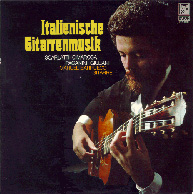
- Title: Sechs Variationen über Les Folies d'Espagne op. 45
- Released 1981 by Fono Schallplatten-GmbH, LP FSM 53 045
- Duration: 4'14"
- Recording date: May 1980
- Barrueco, Manuel (guitar) 'Manuel Barrueco spielt Gitarrenmusik aus
Italien, Spanien und Brsasilien'
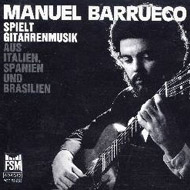
- Title: Sechs Variationen über 'Les Folies d'Espagne' Op. 45
- Released 1992 by FSM 2-set compact disc
- Duration: 4'14"
- Recording date: 1980
- Barrueco, Manuel (guitar) '300 years of guitar masterpieces'
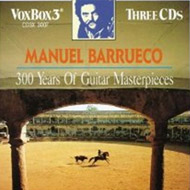
- Released 2004 by Vox Box Englewood Cliffs, N.J., 3 compact discs 3X-3007(?)
- Duration: 4'14"
- Recording date: 1980
- Bracken, Michael (guitar) 'Mauro Giuliani, works for guitar'
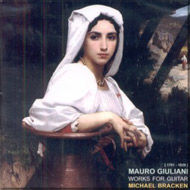
- Title: Variations on La Folia Opus 45
- Released 2005 by unknown Canadian label compact disc XXI-CD 2 1519
- Duration: unknown
- Recording date: unknown
- Buhl-Mortensen, Kristian (guitar) 'Mauro Giuliani, the last rose of
summer'
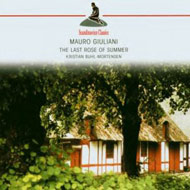
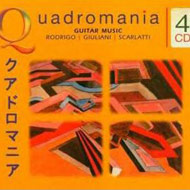
- Title: Folies d'Espagne (Opus 45) (Vienna 1814)
- Released 2002 by Scandinavian Classics TIM, The International Music Company AG compact disc and as a compilation at the 4 compact disc-set by Membran released 2004
- Duration: 5'42"
- Recording date: 2000
- Chiesa, Ruggero edited the music
Ruggero Chiesa wrote as an introduction:The theme of the 'Spanish follies' (actually a bass ostinato in minor mode with the progression I-V-I-VIIb-III-VIIb-I-V, sometimes slightly modified at the conclusion) is encountered in the instrumental repertory as early as the sixteenth century. The first version for guitar was written by Alonso Mudarra, in a Pavana that appeared in 1546. From that time on, variations on this theme were very common, as is evident from the uninterrupted stream of works by numerous composers up to the present day. The long list of guitar variations on this theme includes works by such composers as Corbetta, Carulli, Sor, Ponce and R. Malipiero.
- Published by Zerboni, Milano 1975
- Score 9 p., 32 cm
- Publisher No. S 7887 Z
- Gallén, Ricardo (guitar) 'Mauro Giuliani, Guitar Works Vol.
1 Variations'
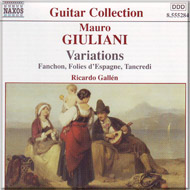
Richard Long wrote for the slipcase:
The folies d'Espagne or folias was not so much a theme as a chord progression, probably of Iberian origin, and dating at least to the sixteenth century. It became a standard in the repertory of the Baroque guitarists and lutenists and found its way into the music of the masters such as Handel, Corelli, Vivaldi, and Boccherini. Guitarists from the seventeenth century onwards seem to have favoured the chord progression to teach arpeggio patterns and as the basis for improvisations, and so the "theme" became firmly rooted in guitar culture. While easy variations on the Folias were well known throughout Europe, Giuliani's Six Variations sur les Folies d'Espagne, Op. 45, (Vienna: Artaria, 1814) was perhaps the most ambitious and virtuosic elaboration for the guitar to that date (Fernando Sor's famous variations, Op. 15, date to the early 1820s).
- Title: Variations on Folies d'Espagne op. 45
- Released 2002 by Naxos Guitar Collection, compact disc 8.555284
- Duration: 4'42"
- Recording date: August 18-23, 1999 in The Green Room, Offord Hall Aurora, Ontario, Canada
- Heuwekemeijer, A.J. edited the music
- Published as facsimile of original by Musica revindicata 179 Amsterdam in 1970.
- Score 5 p., 32 cm
- Facsimile of ed. published by Artaria, Vienna, 18--.
- Kavanagh, Dale (guitar) 'Classical-Romantic Music for Guitar'
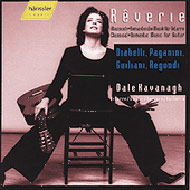
- Title: Variations on Folia di Spagna, Op. 45
- Released by Hänssler compact disc CD98.400
- Duration: 4'21"
- Recording date: unknown
- Martinez, Kurt (guitar) 'Folías'
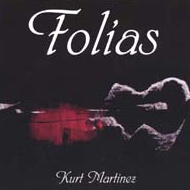
- Title: Variazioni Sulla Follia
- Released without indication of year (but it is 2003) by martinezkurt@cs.com without order number
- Duration: 5'49"
- Recording date: not mentioned in the slipcase
- See also the page Recommended Folia-recordings
- Savino, Richard (guitar) 'The Essential Giuliani, Vol. I'
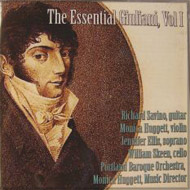
- Title: Six Variations on La Folia for solo guitar, Op. 45
- Released 2006 by Koch 2 cd-set 7591
- Duration: 5'13"
- Recording date: unknown
- Scheit, Karl edited the music
- Title: 6 Variationen über 'Folies d'Espagne' opus 45
- Published by Universal Edition
- Score 12 p., 23,2 x 30,5 cm
- Publisher No. UE16704
- ISMN M-008-00561-9
- Schroth, Andreas
- Published as facsimile of original by Andreas Schroth, Berlin c.1978
- Score 5 p., 31 cm
- Publisher No. ES 3 Edition Schroth 2278
- Facsim. reprint. Originally published: Vienne : Artaria, 1814
- Tampalini, Giulio (guitar) 'Mauro Giuliani, Sei Rossiniane op. 119-124, Variazioni op. 45, op. 107, Grand Ouverture op. 61'
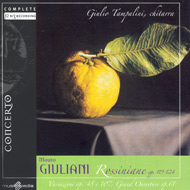
- Title: Variations on Folies d'Espagne, Op. 45
- Released 2007 by Concerto 2 cd-set CD2034 2
- Duration: 4'55"
- Recording date: 2007 in Bartok Studio, Bernareggio, Milan, Italy
- Volta, Sandro (guitar) 'Mauro Giuliani, Opere per Chitarra'
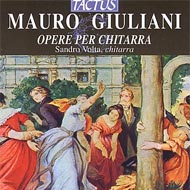
- Title: Six variations our la Guitarre sur les folies d'Espagne Op. 45
- Released 2005 by Tactus compact disc TC 780701
- Duration: 5'20"
- Recording date: 2004
 |
Duration: 0'37", 02 kB, just the fragment |
- Edition Schott, editor unknown
- Released by Edition Schott, Klassiker der Gitarre Band 5
- Publisher's No. ED 6962
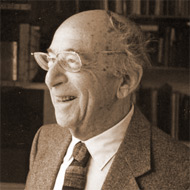 Composed in 1977 for flute and organ
Composed in 1977 for flute and organ
- Björn Grönberg and Gunnar Nordenfors, SMIC ID-number 178949
- Title: Ricordo III (La folia)
- Published by SMIC (Swedish Music Information Center)
- Duration: ca. 16'
- Premiered : 1979-10-06 [yyyy-mm-dd] in Västeras domkyrka by performers Björn Grönberg and Gunnar Nordenfors, SMIC ID-number 178949
- For more information about the sheet music http://www.mic.se/avd/mic/prod/micv6eng.nsf/DocsByCodename/single_object%21opendocument&external=http://www.mic.se/avd/mic/prod/personer.nsf/WebV6BiografierAOEng/5AA1EFA709D52C6441256492002D2449

Great set of Folia-variations consisting of theme, 5 variations and ending with the theme once more (reprise). Because of the very different styles and the dark tonal color of some of these variations they would fit perfectly into the set of variations as written by Manuel Ponce in my perception.
Anthony Glise currently lives and teaches part-time in the US (at Missouri Western State University, St. Joseph, Missouri, USA) and part-time in a small village in the Flanders region of Northern France.
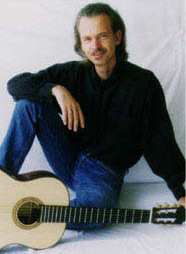
 |
Duration: 0'42", 670 kB. (128kB/s, 44100 Hz) |
 |
Duration: 1'02", 963 kB. (128kB/s, 44100 Hz) |
 |
Duration: 0'54", 858 kB. (128kB/s, 44100 Hz) |
 |
Duration: 1'47", 1682 kB. (128kB/s, 44100 Hz) |
- Glise, Anthony (guitar) 'Dream Scenes, Original Compositions of Anthony
Glise for Classical Guitar (with guest artist, Ken Sugita of the French
National Orchestra-Lille)'
Anthony Glise wrote for the slipcase:
Variations on "Folias de España" were sketched on Pieve di Teco (Italy) and finished in Milan in the fall of 1990. Written on commission from the "Accademia di Studi Superiori L'Ottocento" (Italy), the work develops from the "Folias" theme (slightly altered), through a series of variations which not only expand the thematic material, but also the formal structure of the original.
I am very glad that Anthony wrote down his thoughts about his Folia (2 June, 2005).
From that standpoint, this work is a true synthesis of styles: while still retaining the inherent Renaissance theme, the variations progress in 19th-Century fashion, but using contemporary harmonic and rhythmic elements.
© 2005 by A. Glise, used with permission:
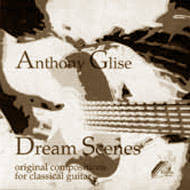
THEME AND VARIATIONS ON THE FOLIAS D'ESPANA, Op. 15 (for solo guitar)
A BRIEF HISTORICAL, SOCIAL, PHILOSOPHICAL AND RELIGIOUS VIEW OF THE FOLIA
ORIGIN OF MY THEME AND VARIATIONS ON THE FOLIA
The story of my variations on the Folia is rather bizarre.
For the last 18 years, I have periodically taught at the 'Accademia degli Studi Ottocento' (Academy for the Study of 19th-Century Music) which is based in Vigevano, Italy (outside of Milan), directed by the 19th-Century expert, Maestro Carlo Barone. During an Academy tour in 1990 (just prior to my winning First Prize at the International Toscanini Competition), most of the faculty was performing one or more of the many variation sets on the Folia theme (esp. those for guitar by 19th-Century guitarists / composers, Mauro Giuliani [Op. 45] and by Fernando Sor [Op. 15]).
In the midst of that tour, the entire academy was in residence at a monastery in Pieve de Teco, Italy - a beautiful site in the Ligurian mountains that once housed over 200 monks - which, in the last 500 years, has been reduced to 2 brothers.
In Pieve di Teco (when we weren't having parties with the 2 monks... and trust me, monks KNOW how to party...) I secretly composed my Folias Variations surrounded by glorious olive and almond groves, the scorpions that shared our toilet space and the single, ice-cold "shower" (a garden hose on a balcony) which was a true legacy to Musolini's Fascist regime.
I composed my Variations on Folias d'Espagna in 6 days at that monastery (the final version, written in Milan)
The next to last stop on the tour was a large concert at the famed church, Santa Maria degli Angeli in Rome and, being somewhat of an anarchist, I wanted to do a surprise piece, decidedly NOT 19th-Century... As I had planned, at that concert I announced a change in my concert program and simply said I was going to play 'The Variations on Folias de Espana...'
Following the sighs of '...bloody hell, not again!' the audience and faculty were shocked, amused and ultimately thrilled to hear a different set of variations on the Folia that was FAR from the ubiquitous versions from the 19th-Century.
THE FOLIA AS A THEME FOR VARIATIONS - A COMPOSER'S VIEW
In my opinion, the Folia represents a near-perfect harmonic progression for writing variations in a quasi-conservative yet virtuostic format. The original theme is fairly simple, but because of the phrase structure, it is possible for a composer to explore harmonic and melodic variants as well as the rhythmic structure of the original ground.
This also brings up an interesting concept that I personally hold as a composer (echoed by the brilliant writer, Milan Kundera, in his novel, The Book of Laughter and Forgetting):
As a composer, I consider the normal compositional process to be one of EXPANSION. A composer takes a theme, expands it, pulls it and develops it into something new. However, composing variations is backwards.
In composing variations, we take a theme and go INSIDE. We go smaller and smaller and try to find a 'thin red thread' which will connect the different variations with the theme. 'Mois est plus!'
In short, traditional western composition addresses the Macrocosm: 'GO BIG!'
Writing variations is an eastern approach which demands that the composer examine the Microcosm: 'GO SMALL!'
For that very reason, writing variations, I believe, forces a composer (and performer) to examine the subjective interior. On a more eclectic level, it is a reflection of our religious Archetyptical Past (if the reader will excuse my gentle reference to Plato's brilliant dialogue, 'Ion'), rather than our Future as I'll discuss briefly in the following section.
VARIATIONS AS A REFLECTION OF RELIGIOUS DEVELOPMENT IN OUR GENETIC MEMORY
RELIGION IN THE MODERN 'WEST' - A VERTICAL PERCEPTION
In the view of most modern western and near eastern religions, individual believers have a more direct and personal access to God through, Jesus, Mohammed and a few other primary intermediary sources. Per that assumption, a relationship to God is 'one-on-one' which is 'vertical' (from the earth-bound believer to heaven). Especially in the west, this belief was further propagated by the European 'Age of Enlightenment' which assumed such a heightened sense of self.
In the west, the INDIVIDUAL became increasingly important per that personal link to God but it required that the individual take responsibility for initiation of that relationship. In effect, the western search for truth goes OUTWARDS (or 'upwards') from the single individual directly to God in the same way that western composers traditionally develop 'outwards' (and 'upwards' with regards to VERTICAL harmonic structure) from the thematic material. A brief look at the 19th-Century sonata-allegro form will confirm this attitude of expansion from a compositional standpoint.
In fact, from the beginning of the 20th-Century, the individual has become so ultra-important to a such a Narcissistic level, that even one single death is cause for war (consider Prince Rudolph's assassination at the hands of a Serbian dissident and the resultant World War I).
This attitudinal difference between the east and west could be further supported if we consider the shift of the Papacy from Constantinople (eastern) to Avignon (western) then finally to Rome (as a compromise between the two), but that is subject better left to theologians...
RELIGION IN THE ANCIENT EAST (Our original 'Roots') - A LINEAR PERCEPTION
In the view of most eastern religions, individual believers have an indirect and less personal access to God through Moses, Buddha and a few other primary intermediary sources.
If we consider earlier religious maxims, an attitude of individual spiritual exclusivity is foreign and in many cases, non-existent. In virtually all historical eastern religions (including many contemporary eastern religions) the individual is ostensibly irrelevant; an attitude which certainly helps explain the current trend of suicide bombings in the middle east.
The ultimate concern is for the 'whole' whether it be the country, region or the village community. It is a concern that goes from one individual to the next within the community in a linear fashion, then - and only then - to God.
The musical parallel, of course, is that in the West, one individually extends upwards to God (which implies an harmonic, vertical structure) while in the East, one extends outwards (which implies a linear structure).
Additionally, in nearly all eastern religions (which we MUST remember is the source of Christianity), one goes INWARD to discover 'truth'. This profound search and arrival has been called 'Satori, 'The Still Point,'Enlightenment,' 'Kether,' etc. while western goes OUTWARDS.
As I said above, as opposed to the western 'vertical' concept, eastern attitudes assume a search that is 'linear'. Additionally, in the east, the individual is infinitely less critical (per no direct access to God as in the west) and in that same manner, composers traditionally develop INWARDS when writing variations on a theme. *
CONCLUSION
For all these reasons, I sincerely consider writing variations a profound, eastern-oriented, subjective venture into the composer's soul... and even into our genetic / spiritual memory. It is a compositional medium that demands MUCH more self-awareness, a command of the thematic material and an approach that requires a compositional maturity of which few composers can boast.
This opinion is evidenced in the careers of many cherished western composers in their more mature works, in particular, Beethoven, who in his latter years was obsessively committed to working in the variation form.
I would strongly urge composers, as they mature, to seriously consider the theme and variation form as a profound medium to express their more serious concepts and the Folia, as a theme, is one of the most accessible and adaptable motives imaginable for experimenting with this severe journey to the soul.
* FOOTNOTE
While I know of no one else who has dared address this subject, in my opinion, I consider it hardly coincidence that historical dance (like music) has exhibited a similar regression with regards to the social interests of the 'communal' vs. the 'individual'.
When we look at primary sources of early dance manuals, the earliest (including manuscripts and incunabula through Arbeau [ca. 1588]) all give dance choreographies which are highly 'communal'. I.e. the entire village dances together, indiscriminate of age, social standing, etc.
This documented attitude, in my opinion, further verifies an historical concern with propagation (thus survival) of the village populace - supported by the fact that early dances were INFINITELY more seductive and erotic - than later historical dances. The goal (conscious or otherwise) of this eroticism, I believe, was to excite the senses (or at least the loins) to insure future generations of the local inhabitants.
I.e. 'Dance... get excited... go breed for the survival of the village'.
By the 17th-Century (particularly as documented in the dance manuals of the two leading Renaissance Dancing Masters, Caroso [1600] and Negri [1604]) dances were more oriented to smaller groups and exhibit less concern over small-scale ('village') communal survival via indiscriminate propagation.
This more conservative attitude is especially prominent in the Renaissance Italian courts where prodigious procreation was, in fact, a terrifying disadvantage which led to the murderous hobbies of the Borgia, et al. in order to 'thin out the competition' for noble title.
Following the Renaissance, we find a majority of dances through and beyond the Baroque focusing on couple or solo dances such as those choreographed by Rameau and, to take one fascinating historical 'step' (no dancing-pun intended) further to the modern disco / dance clubs of today, one simply 'dances' (with or without a partner) and we can only assume that the dancer is even aware that anyone else is on the dance floor!
This self-absorbed 'progress' in the history of dance, presents a strong parallel to musical and social situations and documents a logical progression (regression?) toward a total lack of consideration for anything but the individual.- Released 1998 by Éclipse Recordings France compact disc ECL 1982
- Duration: 7'12"
- Recording date: 1998 at Ransomed Studios, Kansas City, USA. Produced by Thomas Ransom
- The oeuvre and activities of this composer and performer can be found at http://www.anthonyglise.com/index.html
- Glise, Anthony 'Variations on "Folias de España"' (solo
guitar-seven movements)
- Published by Anthony Glise
- ? pages, size 29 x 21 cm
- Publisher's No. AG1015
- Guitarists interested in receiving a complimentary copy of Glise's Theme and Variations on the Folias d'Espana, Op.15, may contact the composer directly at: glisea@aol.com
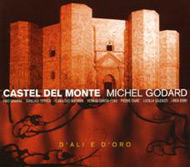 It is no coincidence that Gianluigi Trovesi
is playing in the band because he already had recorded the Folia theme twice
before this session and in 2000 once again.
It is no coincidence that Gianluigi Trovesi
is playing in the band because he already had recorded the Folia theme twice
before this session and in 2000 once again.
- Godard, Michel and band 'Castel del Monte'
Jean-Louis Matinier, accordian. Gianluigi Trovesi, clarine. Michel Godard, tuba.- Released 2000 by Enja compact disc ENJ 9362-2
- Duration: 5'18"
- Recording date: September 1998 in Castel del Monte near Ruvo di Puglia, Southern Italy
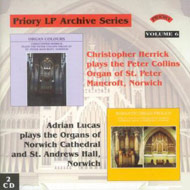
In the slipcase is written:
This set of six variations was commissioned by the Newbury Spring Festival, and first performed by
Christopher Herrick in May 1984. The Portuguese dance on which the variations are based must rank
among the most popular subjects for variation treatment, second only perhaps to Paganini's famous
Caprice; and, like that tune, 'La Folia' derives its attraction to composers from its basic simplicity.
After a straightforward version of the theme and a re-inforcement of its distinctive chord sequence in the first
variation, a twelve-note-row appears, firstly in the bass and, in the subsequent section, as the melody.
After 'scherzo' and 'cantilena' movements, the note-row appears with a vengeance to confront the folia theme,
bringing the work to a thunderous close.
- Herrick, Christopher 'Organ Colours'
- Commissioned for the organist Christopher Herrick
- Released 1985 by Priory LP PR 163 and Priory LP Archive Series Volume 6 released 2005 double compact disc Priory PRCD 918
- Duration: 7'53"
- Recording date: January 19, 1985 at the Peter Collins organ at St. Peter Mancroft, Norwich, England
- Premiere at the Newbury Festival 1985 and broadcasted on Radio 3 BBC
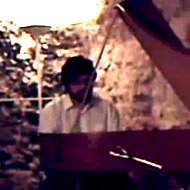
Duration: 5'32" direct link to YouTube
|
This is a jazz improvisation upon the 'Folies d'Espagne' harmonic pattern.
Before, I have never recorded this theme but played it in different concerts.
Why I choose to do a jazz version? Because the method of improvising in the 17th century was basically
the same as in most styles of jazz: variations upon a harmonic scheme. So the use of this theme as well
as of some other 16th and 17th-century 'standards' (see my other recordings on Youtube) seems rather
organic in jazz 'clothes' (see 'Greensleeves' by Coltrane). Of course this is no more 'baroque' music but
modern music upon an old theme.
- Goldobine, Dimitri
- Not released by any record company or radio broadcasting (yet)
- Duration: 5'32"
- Recorded: the first of December, 2007 in 'Baroque Bar' Nice, France
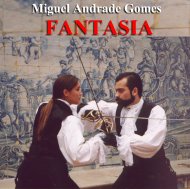
Variations on 'La Folia' (theme and 6 variations) was not only influenced by the Baroque (for example the triads in the 6th variation), but especially the piano-part takes care for the mixture with the later Romanticism. In every variation the accent is given to the first beat (while lots of Folias do stress the second beat of each bar). In the end of the 3th variation the 16th bar is omitted to slip right into the new and slower variation where it isn't expected.
 |
Duration: 3'32", 17 kB. |
- Gomes, Miguel Andrade
The oeuvre of the composer can be found at http://miguel.gomes.com
- Released 2000 by mp3.com and can be downloaded (3.3 MB) and/or ordered at http://artists.mp3s.com/artists/69/miguel_dandrade_gomes.html
- Duration: 3'32"
- Recorded 1997 in Portugal
In the genre: Gothic/Industrial/Classical a very short folía

La folia
|
- GPKISM 'Sanguis Rosa'
- Title: La folia
- Released 2010 by Darkest Labyrinth mini-album (cd) ordernr. DLKK-4
- Duration: 1'27"
- Recording date: September 12, 2010 at the live house
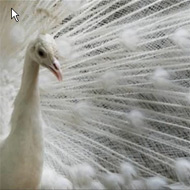 It contains 13 variations on an old Spanish theme Folia
It contains 13 variations on an old Spanish theme Folia
- Gorjanc, Jan
- Title: Trece Variaciones sobre la Folia de España is orchestral music in classical style
- Released August 2010 by The HarpPlayer at YouTube
- Duration: 8'30"
- Recording date: 2010 published on YouTube http://youtu.be/RlXUwysGcPU
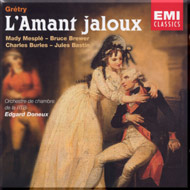 David Charlton wrote in 'Grétry and the growth of Opera-Comique' (Cambridge
University Press 1986) in the opera explanation that Grétry has used
the Folia to characterize the Spanish nationality of Lopez (one of the characters)
in Act 2, 'Le mariage est une envie' :
David Charlton wrote in 'Grétry and the growth of Opera-Comique' (Cambridge
University Press 1986) in the opera explanation that Grétry has used
the Folia to characterize the Spanish nationality of Lopez (one of the characters)
in Act 2, 'Le mariage est une envie' :
'L' amant jaloux has a sombre, impetuous character: there
is nothing comparable in its successor. L'amant jaloux is set in Spain,
the characters had to take a Romantic tint inspired by the customs, nocturnal
amours and the novels of that nation.
Character in nationality determined the French menuet for Florival in scene
10. More calculated still was the use of the 'Folia'-bass in 'Le mariage
est une envie', though Grétry claimed that 'the reference was appreciated
immediately'. Lopez is given a text in which he inveighs against mariage.
To set this 'musical dictum' as he called it, the composer had recourse
to a kind of a pun that depended on local colour: the formula known as 'Les
folies d'Espagne'. This bass-line, known at the time everywhere for its
fifteenth- and sixteenth-century Iberian associations, was associated by
Grétry with Corelli, i.e. the violin sonata Op. 5 no. 12. But its
use as the basis of song had occurred earlier in eighteenth-century Parisian
opéra-comique.
- Doneux, Edgard Director/Chef d'orchestre, Charles Burles Tenor, Michel
Trempont Bariton, Mady Mesple Soprano, Danièle Perriers Soprano,
Jean van Gorp Bariton, Jacqueline Sternotte Soprano, Ludovic de San Bariton,
Monique Bost Soprano, Jules Bastin Basse, Bruce Brewer Tenor, Christiane
Chateau Soprano, Chambre RTBF Orchestre de chambre. Jules Bastin plays
the character of Lopez.
- Title: Le mariage est une envie from 'L'Amant Jaloux opéra-comique en 3 actes'
- Released 1978 by EMI LP-set together with the opera 'Richard Coeur de Lion' CC 21 2. ref. 2C 167 - 16.237 Q B
- Duration: 0'55"
- Recording date: not indicated but since this recording was released again in 2002 with the same orchestra and singers as a release of the older recording with all the facs the recording date: May 16-26, 1977 in Salle de la Madeleine, Brussels (Bruxelles), Belgium is very likely.
- Doneux, Edgard Director/Chef d'orchestre, Jules Bastin Basse, Christiane
Chateau Soprano, Chambre RTBF Orchestre de chambre. Jules Bastin plays
the character of Lopez and Christiane Chateau the servant of Léonore
'L'Amant Jaloux'.
- Title: Le mariage est une envie from 'L'Amant Jaloux opéra-comique en 3 actes'
- re-released 2002 by EMI compact disc 7243 5 75263 2
- Duration: 0'55"
- Recording date: May 16-26, 1977 in Salle de la Madeleine, Brussels (Bruxelles), Belgium
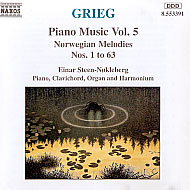
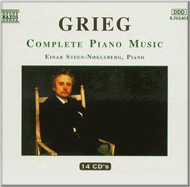 In 1874 the Danish publisher asked Grieg to prepare a collection of folk tunes for the
piano to be published under the name ' Melodies
of Norway'. Because of the simple nature of the collection, Grieg was not inclined to
be associated with the pieces
and so the copyright was sold to Wilhelm Hanssen in 1877. Towards the end of his life, Grieg got a more positive
attitude towards the collection of folk tunes.
In 1874 the Danish publisher asked Grieg to prepare a collection of folk tunes for the
piano to be published under the name ' Melodies
of Norway'. Because of the simple nature of the collection, Grieg was not inclined to
be associated with the pieces
and so the copyright was sold to Wilhelm Hanssen in 1877. Towards the end of his life, Grieg got a more positive
attitude towards the collection of folk tunes.As Francesco Ricci pointed out about this piece in an e-mail the 19th of August 2011:
The second thing I found (don't know if it can be of any interest) is that the piece of Grieg "In Rosenlund etc..", taken from Norway Melodies, sounds really close (but really a bit too close) to the Swedish song "Sinclairs Visan"; so probably is meant to be the same theme. On the other hand I wouldn't be surprised if a Swedish melody could be taken for a Norwegian melody, or vice versa...
- Steen Nokleberg, Einar 'Grieg, Complete piano music Volume 5'
- Title: In Rosenlund
- Released 2004 by Naxos 14 compact discs, Volume 5, 8.501 401
- Duration: 1'22"
- Recording date: March 6-7, 1994 at Lindeman Hall, Norwegian State Academy of Music-Oslo
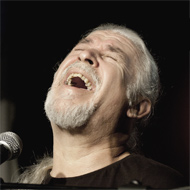
The piece was written for the recorder player Drora Brook.
- Bruck, Drora (recorder)
and ensemble
- Title: La Folia
- Released as a broadcasting Galey Zahal, the IDF broadcasting authority
- Duration: unknown
- Recording date: October 18, 1992
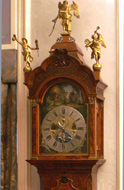
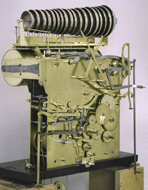 In total 16 melodies, each hour in full, on the half hour an introduction air. On the dial are eight melodies indicated: 1-8. Titles: Folies d'Espagne by J.H.d'Anglebert; Menuet by Locatelli; March by Corelli; March of Paris; Schoon dat ik onder 't groen
In total 16 melodies, each hour in full, on the half hour an introduction air. On the dial are eight melodies indicated: 1-8. Titles: Folies d'Espagne by J.H.d'Anglebert; Menuet by Locatelli; March by Corelli; March of Paris; Schoon dat ik onder 't groenThe music is played on 18 bells by 32 hammers (see picture).
- John Georg Grüning
- Title: Folies d'Espagne inspired by d'Anglebert
- Built circa 1770-1780
- Duration Folies d'Espagne: 1'02"
- You can see the clock and hear the carillon at http://www.antiques4yu.com/Staande%20klok%20met%20carillon.htm
- Photos by H. Ming G. Yu
- The clock is part of the Ming Yu collection, used with permission
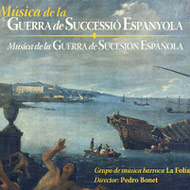
- Grupo de Música barroca La Folia conducted by Pedro Bonet 'Música De La Guerra De Sucessió Espanyola'
- Title: Folías De Espanya Ab Mudansas Biblioteca de Cataluña M. 1452
- Released 2007 by Columna Música 2 cd-setcompact disc
- Duration: 6'10"
- Recording date: unknown
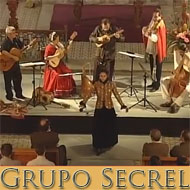
A live performance during the Festival in Morelia
|
- Grupo Segrel (Vladimir Bendixen: fÍdula y voz, Liamna Pestana: guitarra barroca y voz,
Jorge Morenos: guitarrilla y quinta huapanguera, José Pablo Jiménez: viola da gamba, Casilda Madrazo: danza y castañuelas, Manuel Mejía Armijo: laùd y guitarrilla)
- Title: Folías: Recercada cuarta de Diego Ortiz, "Serrana, si vuestros ojos" de Luis de Briceño, Folía de Gaspar Sanz / Grupo Segrel
- Broadcasted at YouTube by Mariscofresco July 6, 2011
- Duration: 11'28"
- Recording date: 2010 in Templo de las Rosas, Morelia, Mexico at the Festival de Música de Morelia Miguel Bernal Jiménez
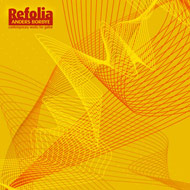
Bo Gunge wrote about his 'A Devil behind the mask':
The piece ”A Devil Behind the Mask”, dedicated to Anders Borbye, was written for electric guitar, and exploits extensively this instruments ability to change character. At the same time, the concept of Anders' CD, collecting pieces that refer to the old ”La Folia” theme, is well suited to work with the tension in holding on to something while it is changing. In my piece the Folia-theme is the little devil that roams underneath, hiding in different pleasant disguises, that are only step by step revealed by Anders. At last we actually reach the core, and the theme appears to us in a way we could never have imagined this old theme would sound! When we find our own ”core” I hope it is in the same way crude, fascinating and frightening. But it probably isn't. If it is there.
- Borbye, Anders 'Refolia, contemporary works for guitar'

Duration: 1'01", 951 kB. (128kB/s, 44100Hz)
Fragment of Devil behind the mask, performance by Anders Borbye
© 2008 Anders Borbye, used with permission- Title: A devil behind the mask
- Released October 2008 by Gateway ordernumber AB001
- Duration: 8'56"
- Recording date: August-September 2008 in the Frederikskirken, Aarhus
- World première October 13, 2008 in Aarhus Denmark during the Guitar Festival (http://www.aarhusguitarfestival.dk)
- See also the page Recommended Folia-recordings
- More about Anders Borbye at http://www.andersborbye.dk
In this 'later' Folia standard chord progression the folia-theme is actually never played
Published in Poema harmónico compuesto de varias cifras por el temple no. 11, 1694.
Donald Sauter published the tablature of this piece at http://www.donaldsauter.com/fg37.htm
 |
Duration: 0'59", 02 kB. |
| First of Doze diferencias de Folías | by Hudson Vol I, p. 118 |
|---|---|
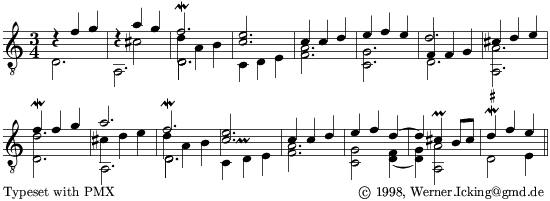 |
|
- Armoniosi Concerti 'Zarambeques, Música Española de los
Siglos XVII y XVIII en torno a la Guitarra'
In the slipcase is stated:The Folia is a danza of Portuguese origin with an extensive history in Spain - there being references to it as far back as the fifteenth century. During the course of the seventeenth century the harmonic pattern known as the folías de España became widely used (the three that we include here follow that pattern). [...] From Guerau there are twelve diferencias on folías of a poised beauty, profuse with ornaments and with melodic ideas cleverly interwoven between all te voices.
- Title: Folías
- Instrumentation: Juan Carlos Rivera (Baroque guitar in e)
- Released 2002 by Harmonia Mundi compact disc HMI 987030
- Duration: 5'25"
- Recording date: May 29 and 30, June 1 and 2, 2002 in Sala de Cámara del Conservatorio Superior de Música de Sevilla, Spain
- More about the oeuvre of Juan Carlos Rivera at http://www.juancarlosrivera.com
- Axivil Castizo directed by F. Sánchez (with C. Carazo) 'Sarao Barroco'
This is an arrangement of the three Folías by Sanz, Guerau and Santiago de Murcia originally for guitar.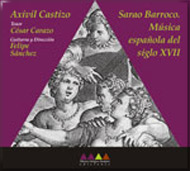
- Title: Folías
- Released 2005 by Harmonia Mundi Espagnol compact disc MAA 003
- Duration: 4'58"
- Recording date: unknown
- Díaz-Latorre, Xavier
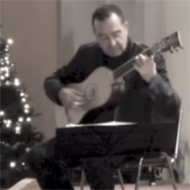
Xavier Díaz-Latorre plays Folías by Guerau
Duration: 5'45" direct link to YouTube
© 2013 by Xavier Díaz-Latorre- Title: Folias
- Published December 2013 by Xavier diaz-latorre for YouTube
- Duration: 5'45"
- Recording date:December 21, 2013 in Baarn, the Netherlands
- The website of Xavier Díaz-Latorre http://www.xavierdiazlatorre.com
- Díaz-Latorre, Xavier 'Francisco Guerau, complete works'
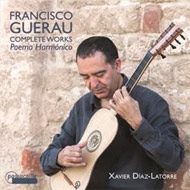
- Title: Doze diferencias de Folias
- Released by Passacaille 3-cd box order number 998
- Duration: 6'30"
- Recording date: unknown
- The website of Xavier Díaz-Latorre http://www.xavierdiazlatorre.com
- Extempore Ensemble (William Thorp: violin, guitar, Rosemary Thorndycraft: bass viol, harp
Sally Owen: spinet, tenor viol, tambourine, Robin Jeffrey: guitar, theorbo, George Weigand (director): bandurrias, lutes, vandola, harp 'Spanish Music of the Golden Age, 1600-1700'
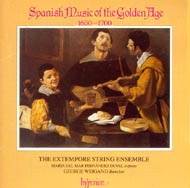
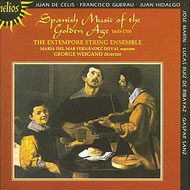
The entire suite: I. Hachas (anonymous) II. Folias (Guerau) III. El Villano (anonymous) IV. Matachin (Guerau)
Duration: 7'42" direct link to YouTube
© 1988 by Hyperion- Title: Folias, theme and 5 variations on the later folia chord progression and melody
- Released 1988 by Hyperion compact disc CDH55098 and released at October 1, 1996 by Hyperion compact disc 66327
- Arrangement by George Wiegand and Rosemary Thorndycraft, instrumentation: violin, spinet, lute, bass violin and bandurria
- Source: mentioned in the slipcase that the tunes by Guerau came from a manuscript dated 1684, Madrid.
- Duration: 3'15"
- Recording date: September 16, 17 and 18, 1988
- Ferries, Gordon (baroque guitar) 'Marionas'
 In the slipcase Gordon Ferries wrote:
In the slipcase Gordon Ferries wrote:
The word folias is Portuguese in origin meaning mad or empty headed. References in relation to music and dancing go back as far as the fifteenth century. The term describes two forms; an early and later variant which became known under the French name 'La folia' or 'Folie d'Espagne', whose emphasis on the second beat is closely related to the French Sarabande. The folia was also sung as well as danced with an example of a text again given by Brinçeño. Guerau's twelve variations generally stick to the older form but with some rhythmic elements of the new. He gives no hint of the madness implied by the title and instead offers us a serene interplay among the parts, greatly enhanced by his preferred use of octave stringing.
- Title: Folias
- Released 2008 by Delphian Records compact disc DCD34046
- Duration: 8'03"
- Recording date: April 9-10, 2007 in Crichton Collegiate Church, Edinburgh. Scotland
- Instrument built by Martin Haycock built after various 17th century Venetian models, principally after Sellas
- Jeffery, Brian edited the music of Poema harmónico compuesto de
varias cifras por el temple (1694)
- Published 1977, reprinted with minor changes 1998 by Tecla
- Reprint of the original edition in guitar tablature, with an introduction by Brian Jeffery and an English translation of Guerau's own dedication, prologue and technical instructions.
- Publisher No. TECLA 0374
- Koch, Hans Michael (guitar) 'La Guitarra Española: 1546-1732'
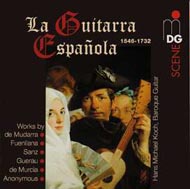
- Released 1999 by Musikproduktion Dabringhaus und Grimm DG compact disc 605-06102
- Duration: 5'30"
- Recording date: June 1994 in the Orienburg of Schloss Nordkirchen
- The instrument used is either a four-course guitar after iconographic sources by Winfried Heitland, Grevenbroich 1980 (a1 = 440 Hz) or a five-course guitar after Alexandre Voboam, Pris 1676 by Hendrik Hasenfuss, Kürten 1994 (a1 = 415 Hz). Unfortunately the booklet does not give any detail which guitar is used for this special piece.
- Long, R.M.
- Published in Soundboard (journal of the Guitar Foundation of America), Vol. XXX, No 2, October 2004
- With minimal finger settings
- pages 19/21
- Private Musicke: Pitzl, Pierre (Guitar) Sandlands, Hugh (Guitar) 'Tonos
humanos'
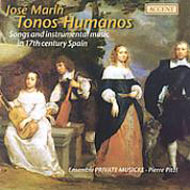
- Released 2005 by Accent compact disc ACC 24160
- Duration: 6'00"
- Recording date: unknown
- Pujol, Emilio
- Folías: air de danse / Francisco Guerau, transcription de Emilio Pujol
- Published by M. Eschig, Paris
- 4 pages for solo guitar
- Year of publication 1957
- Storms, Yves (guitar) 'Variations Folia de España'
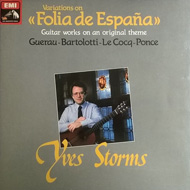 Peter Pieters wrote as introduction to Folies d'Espagne on the inside
of the cover:
Peter Pieters wrote as introduction to Folies d'Espagne on the inside
of the cover:
In Baroque times, no melody or chord schema was more often used in variations than the Folly from Spain. Incontestably, Corelli's «La Folia» is the most famous, but even ].S. Bach used the theme' in his «Peasant Cantata».
Originally, the Folly was a wild dance, in which men in carnival costume often ~eached a state of hysterical trance. The Church did not approve and as a result the Folly was gradually transformed into the slow, solemn melody we know today
The Folly was extremely popular among baroque guitar players, to the point that Robert de Visee - almost alone in not publishing one - felt it necessary to write in his introduction: «Neither will one find here the Spanish Folly. So many of these are now to be
heard, that I could only repeat the follie of others».
There is not the space here to list all the Follies written for the Baroque Guitar, but the three collected on this record are among the most beautiful: that of the Spaniard F. Gereau, the Brussels-born F. Le Cocq and the ltalian A.M.B. whose works have been neglect to this day.
In later times as well, guitar players have shown their partiality for the Spanish Folly and the two greatest guitar composers of the 19th Century, Fernando Sor and M. Giuliani, wrote variations on these themes. In our own times the Mexican Manuel Ponce, who wrote principally for the guitar, also composed some Follies; indeed, his most important work comprises no less than 20 variations followed by a majestic fugue.- Title: Doze diferencias de folias from Poema Harmonico (1694)
- Released 1983 by EMI Belgium 1A 065 1651791
- Duration: 4'20"
- Recording date not mentioned in the documentation
- See also the page Recommended Folia-recordings
Theme and 12 variations for two violins
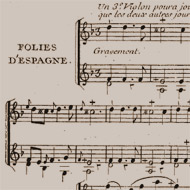
 |
Published in the public domain |
- Guignon, Jean-Pierre "Nouvelles variations de divers airs et Les Folioes d'Espagne amplifiés par J.P. Guignon. Roy de violins dédi&eactute;s a Monseignieur le Dauphin.
- Title: Nouvelles variations de divers airs et les Folies d'Espagne, Op.9
- Published first edition, Madame Bovin, Paris
- 8 pages
- Year of first publication 1736
The instruments: piccolo, flute, oboes, clarinets, bassoons, contrabassoon, horns, trumpets, trombones, tuba, timpani, percussion, harp, strings

 |
Published in the IMSLP under restrictions |
- Gutiérrez-Martínez, Arturo
- Title: XXIV Variacioni e una Fantasia sull'La Folia di Spagna
- Typeset by the composer
- 69 pages
- Year of composition 2008, first publication 2012
